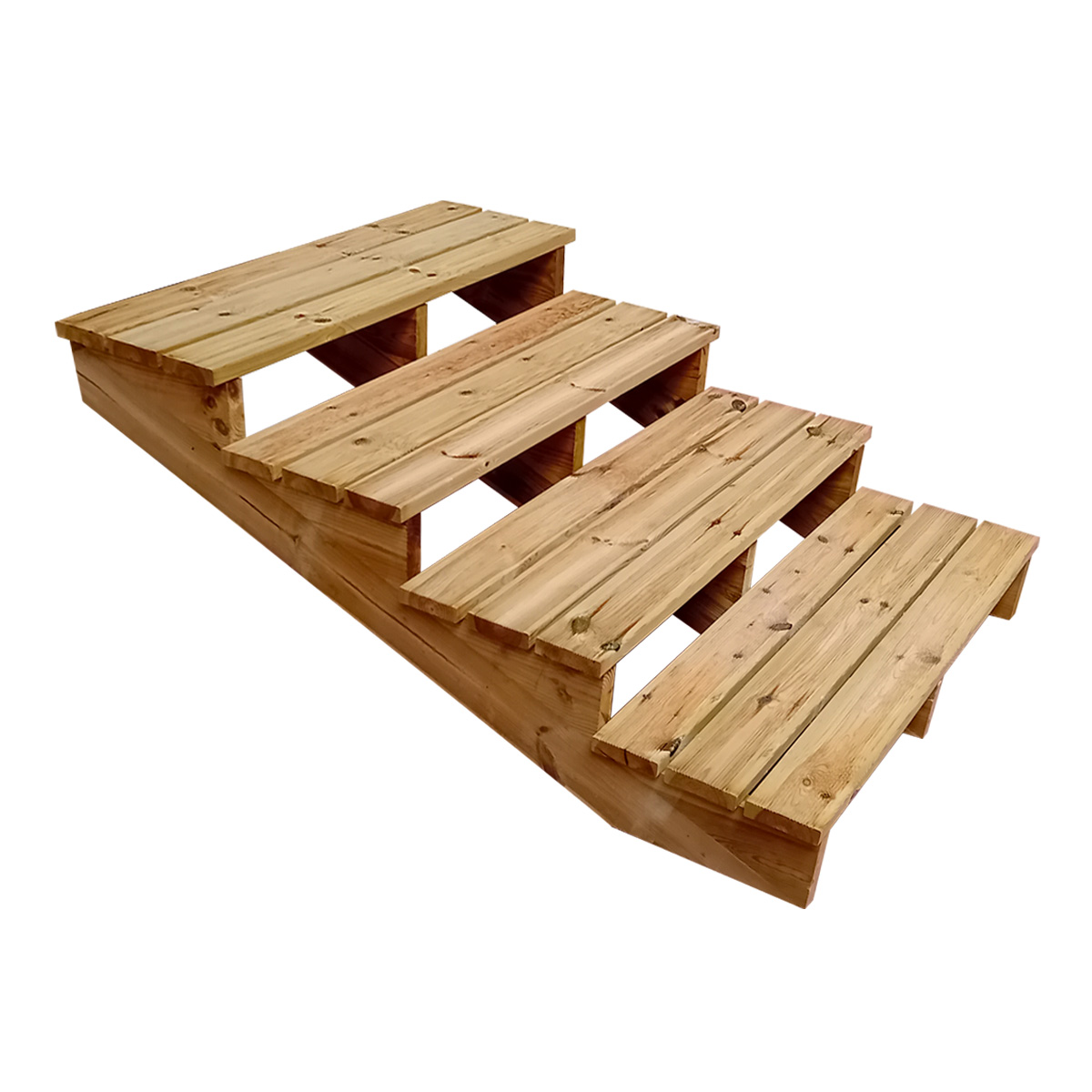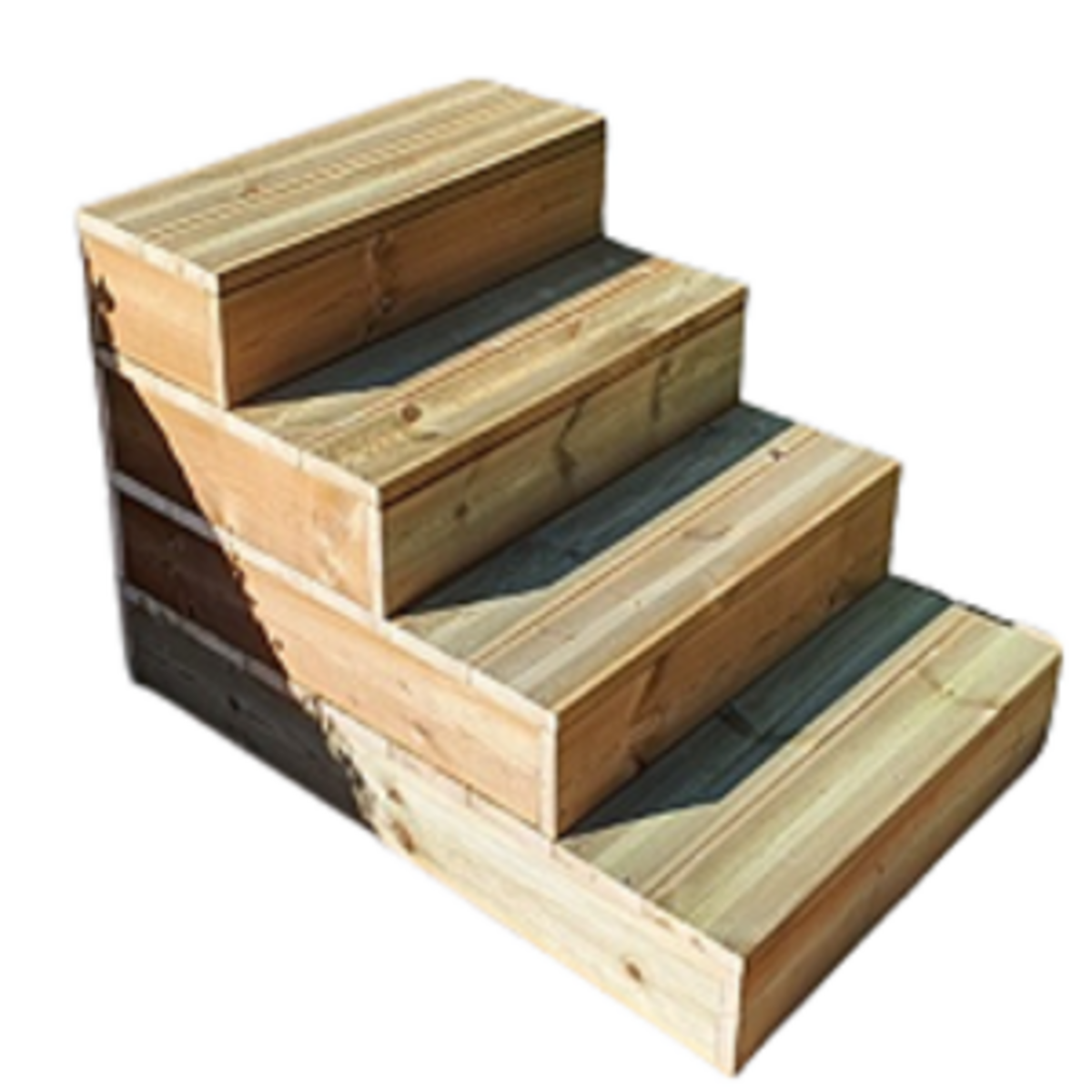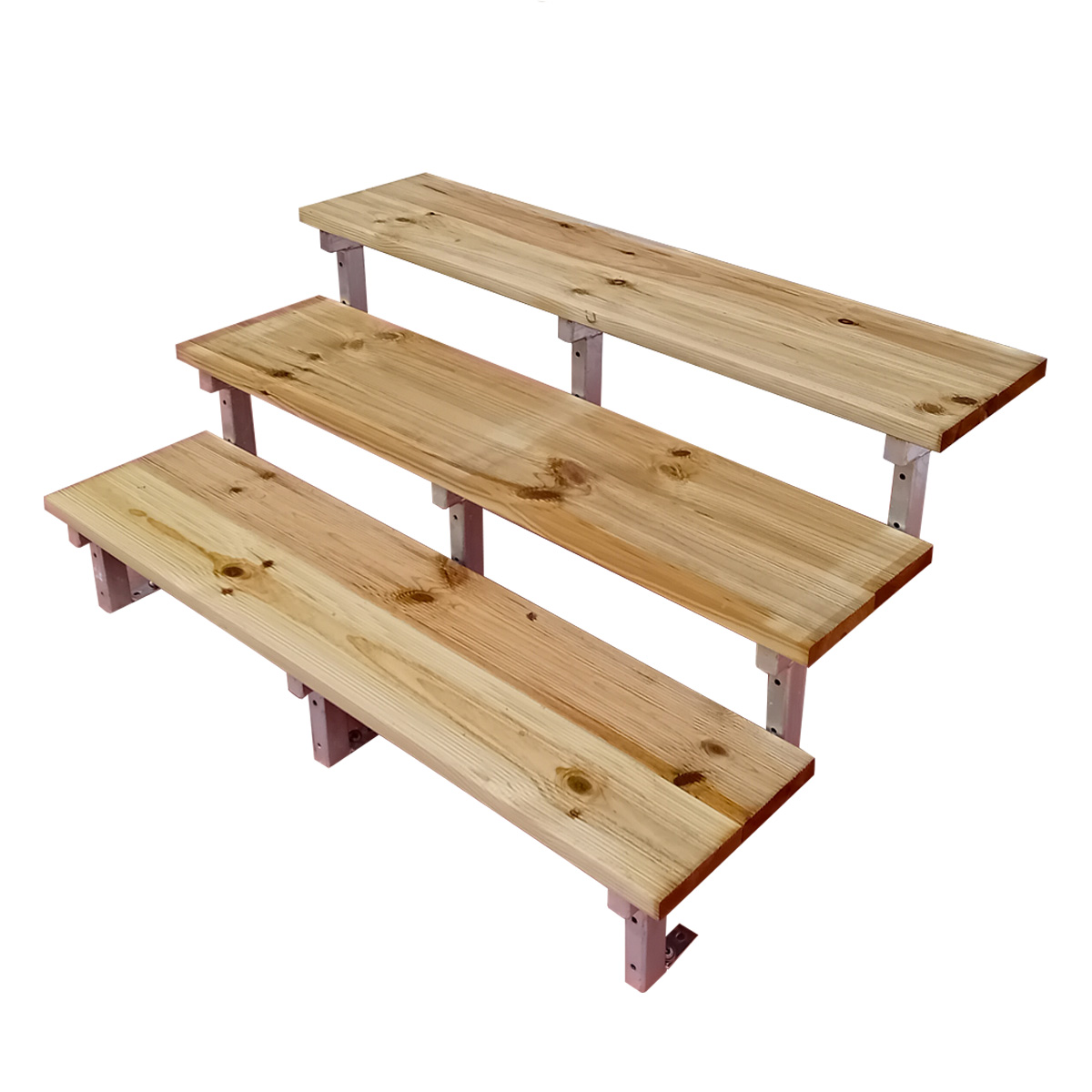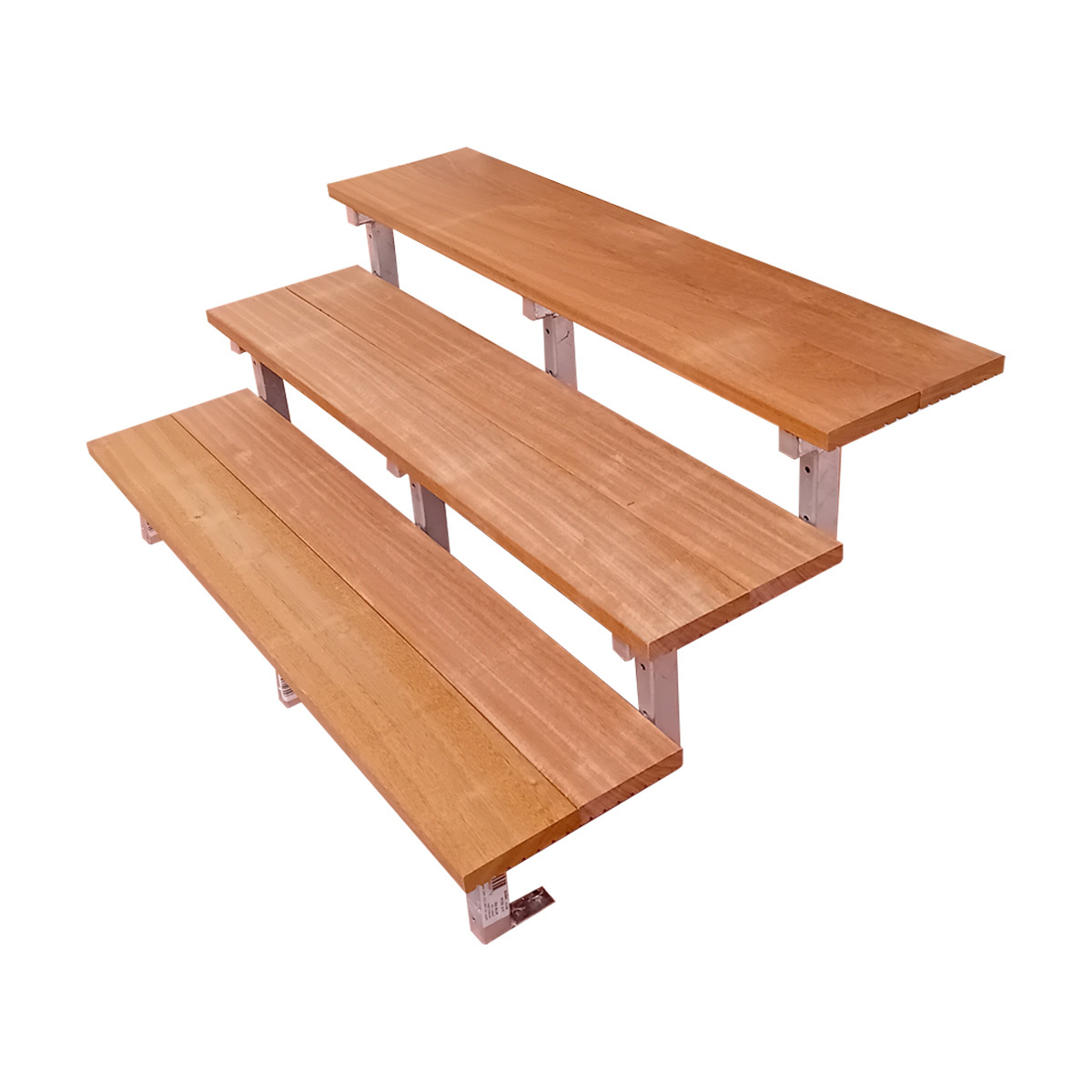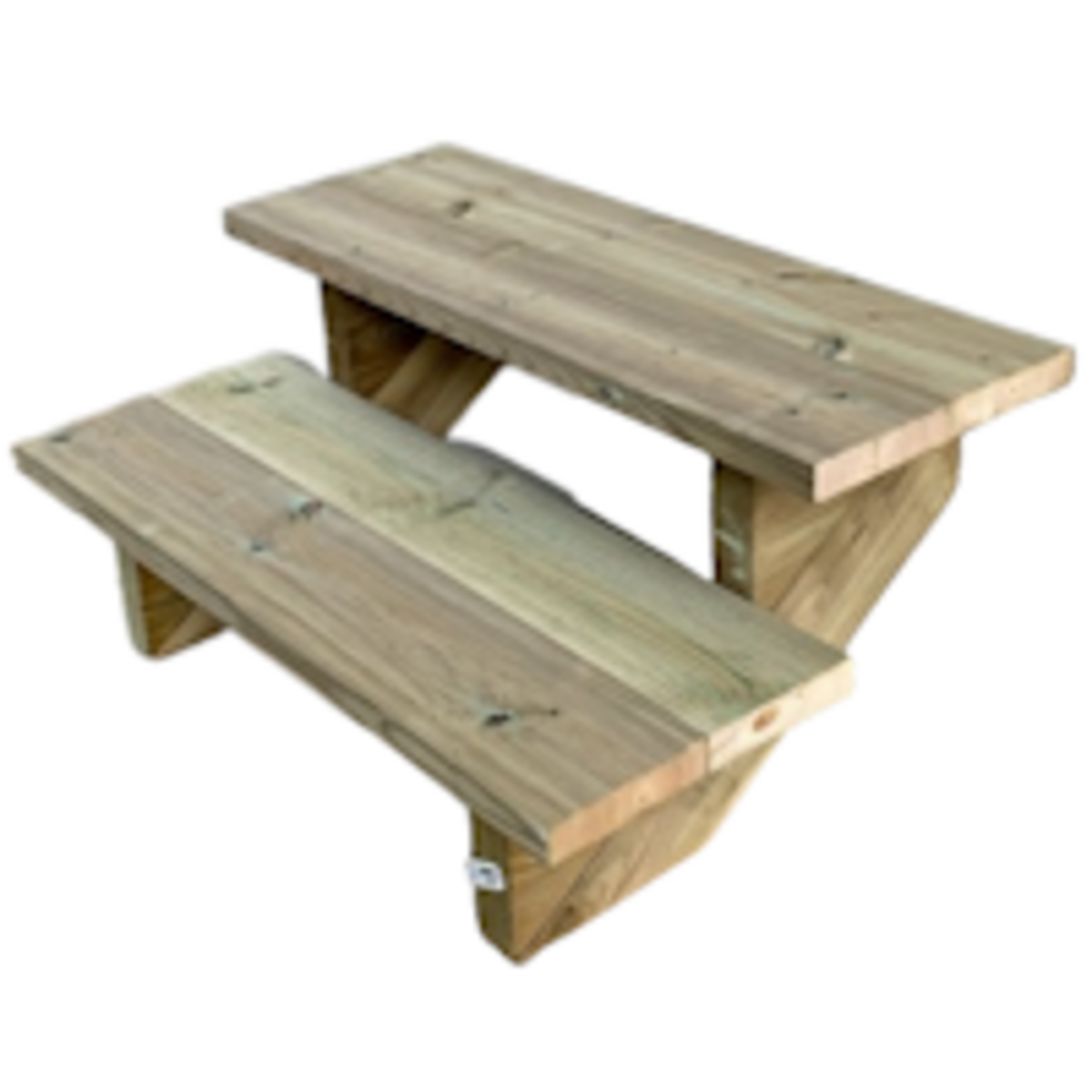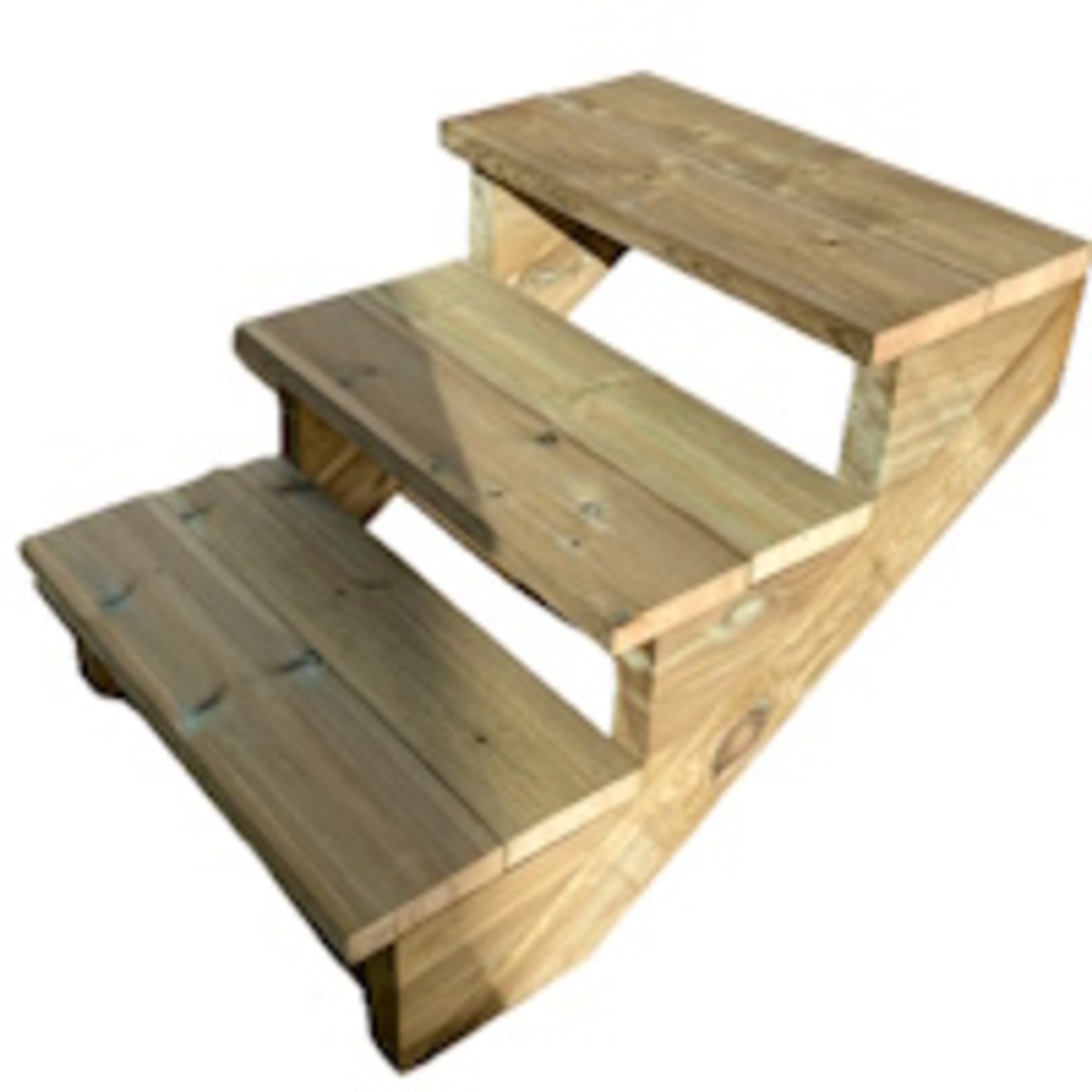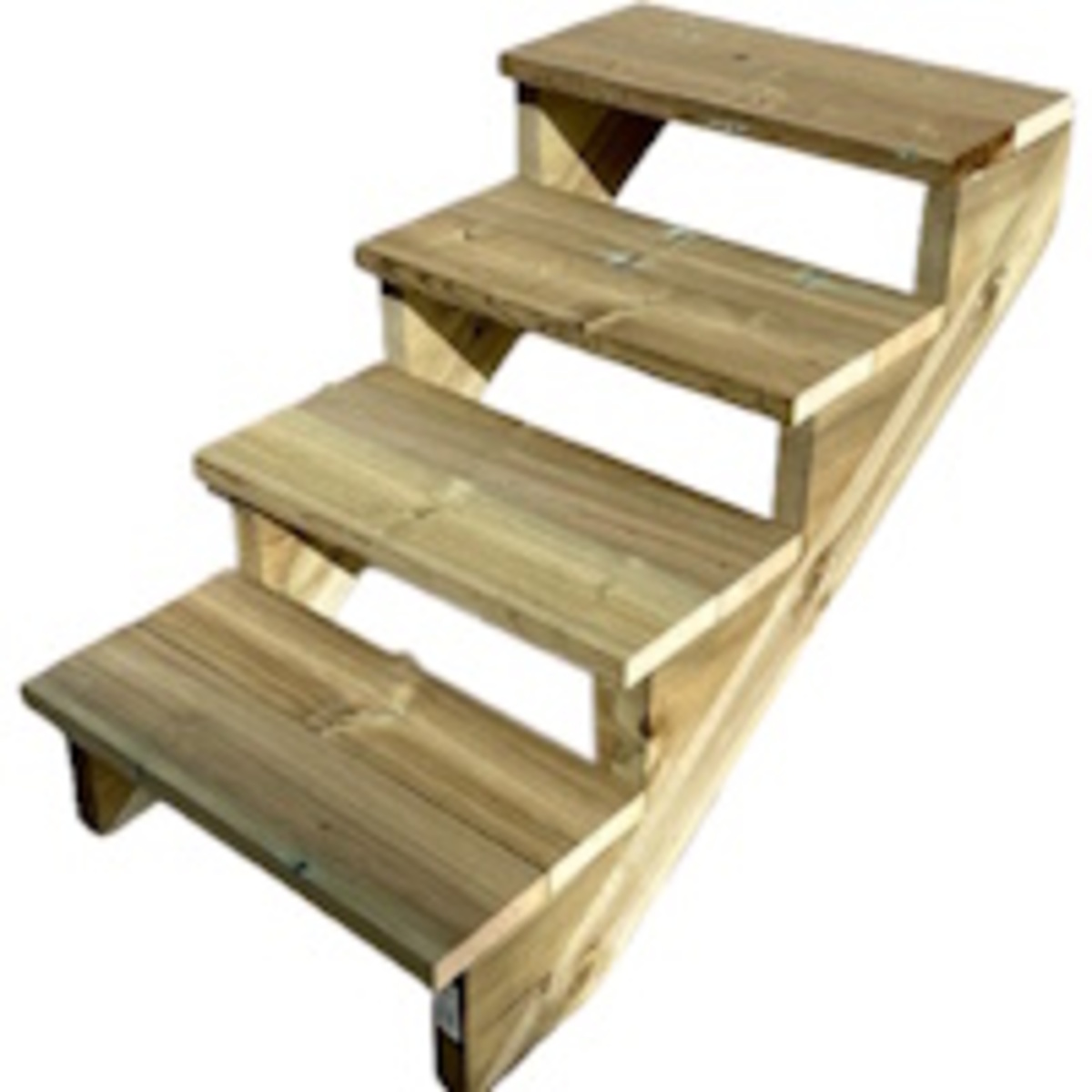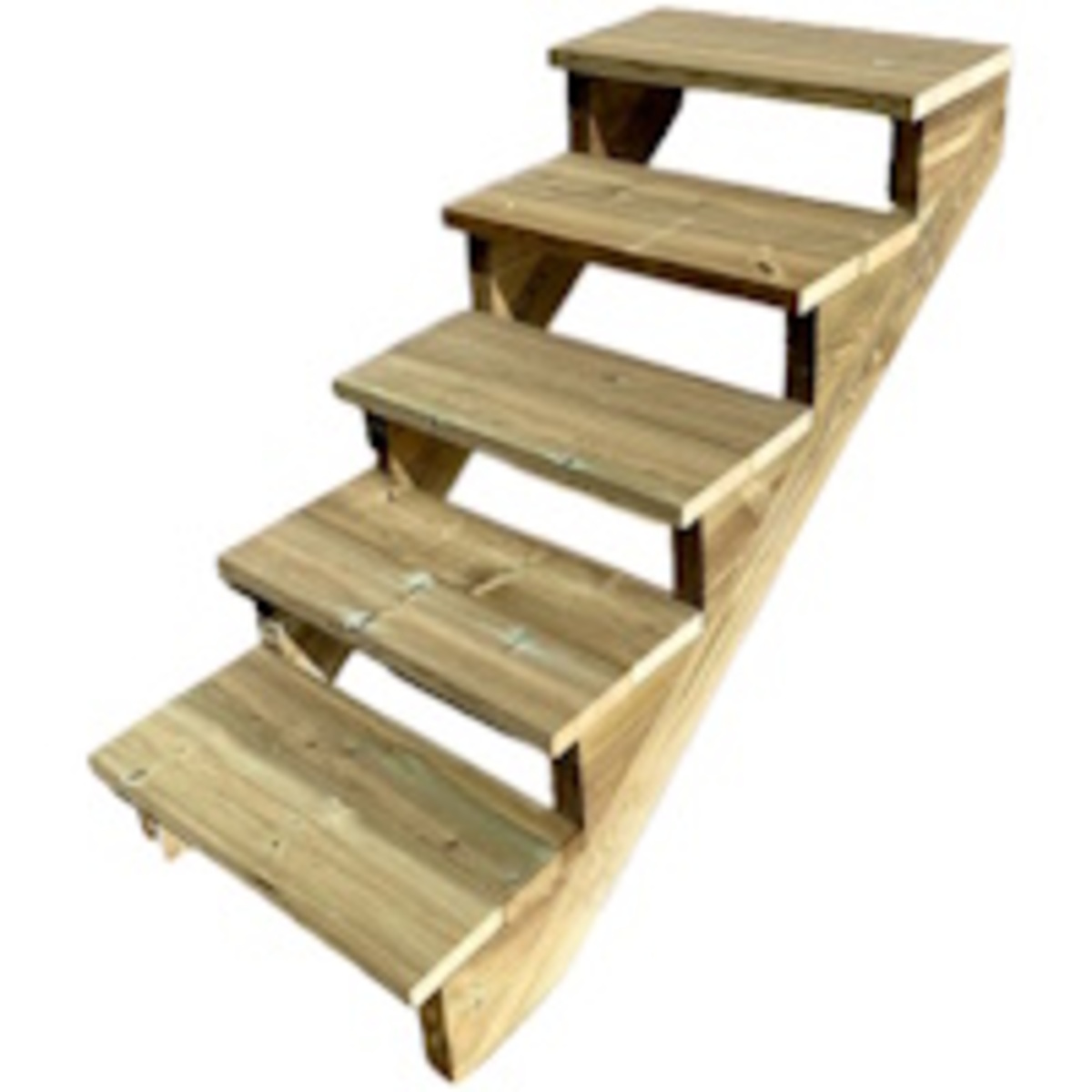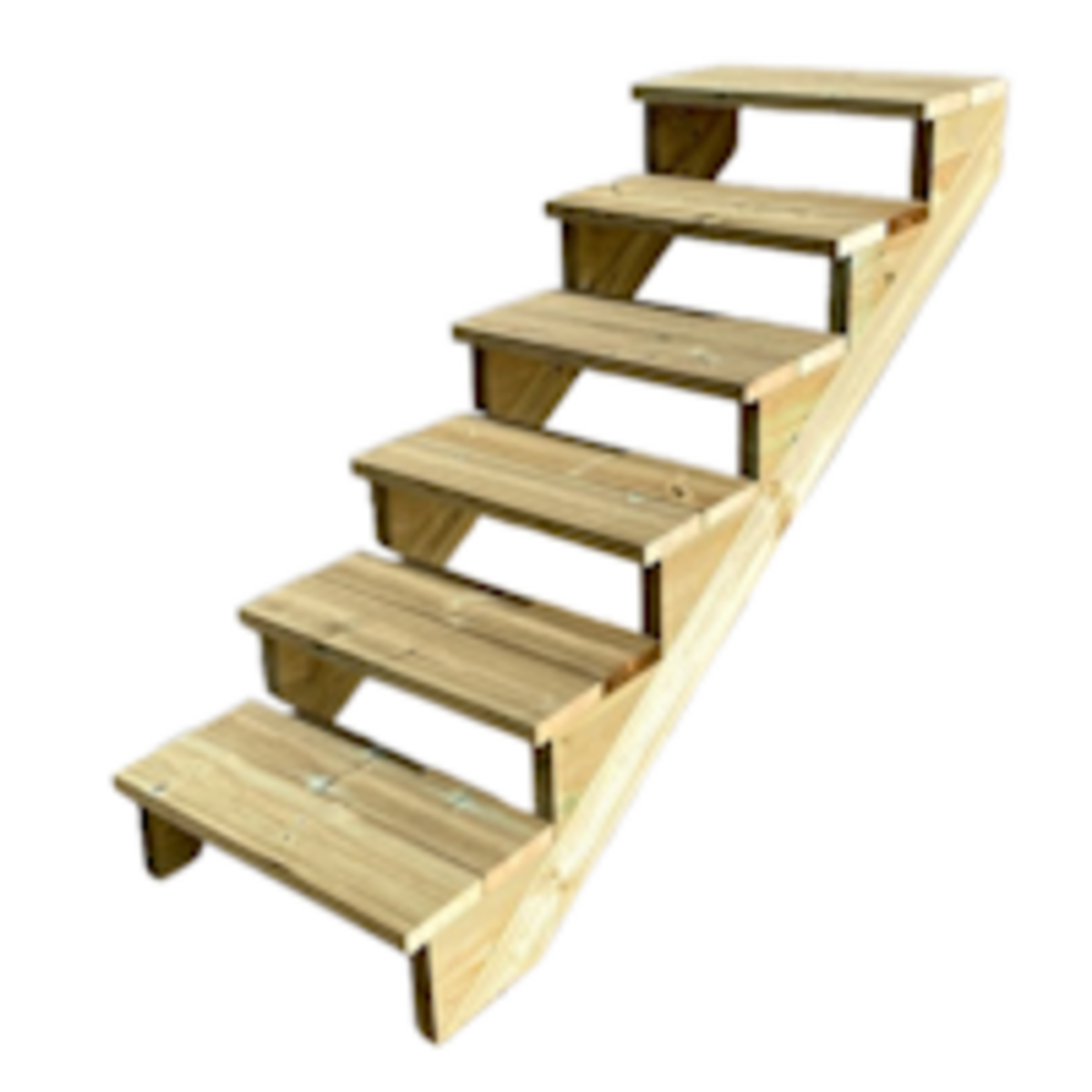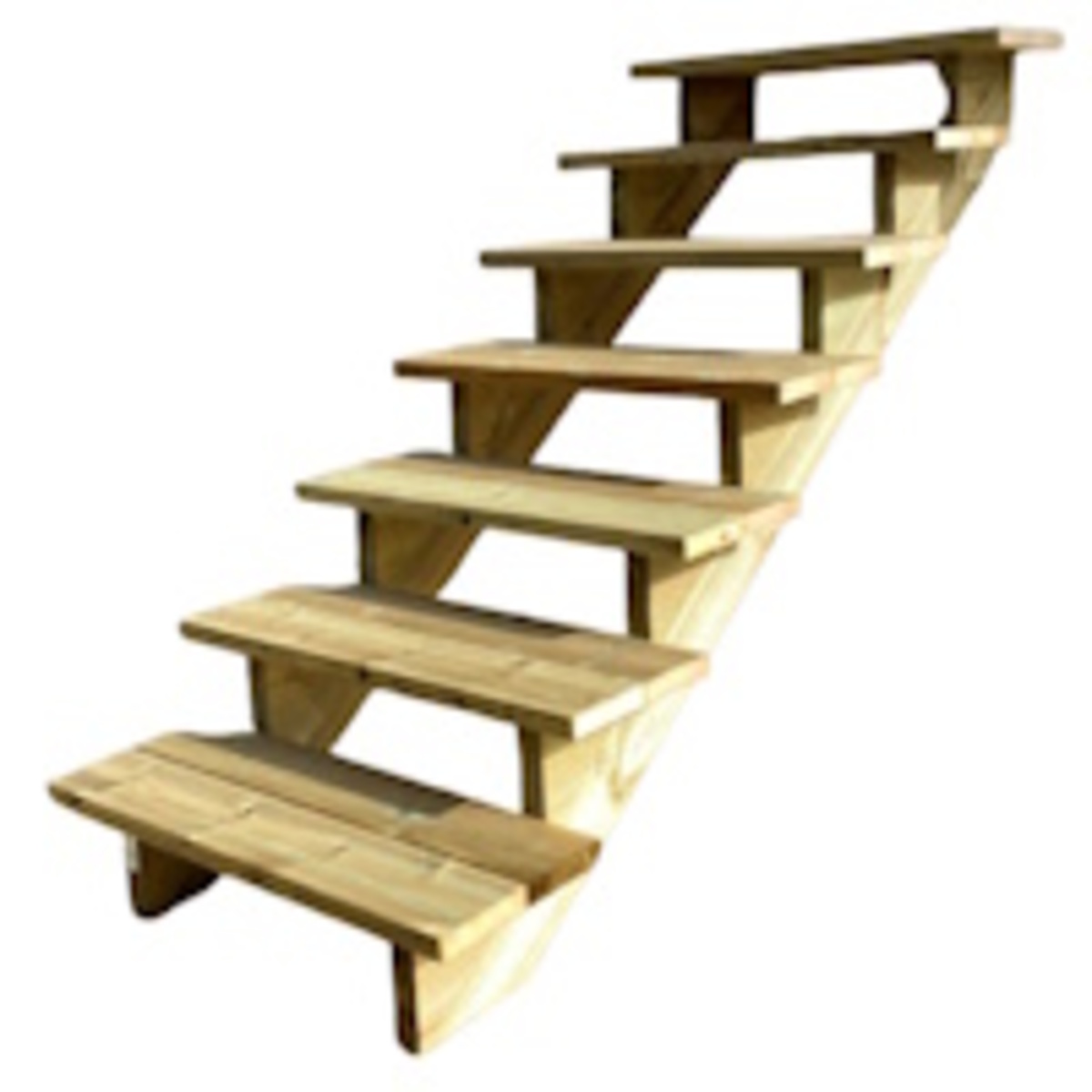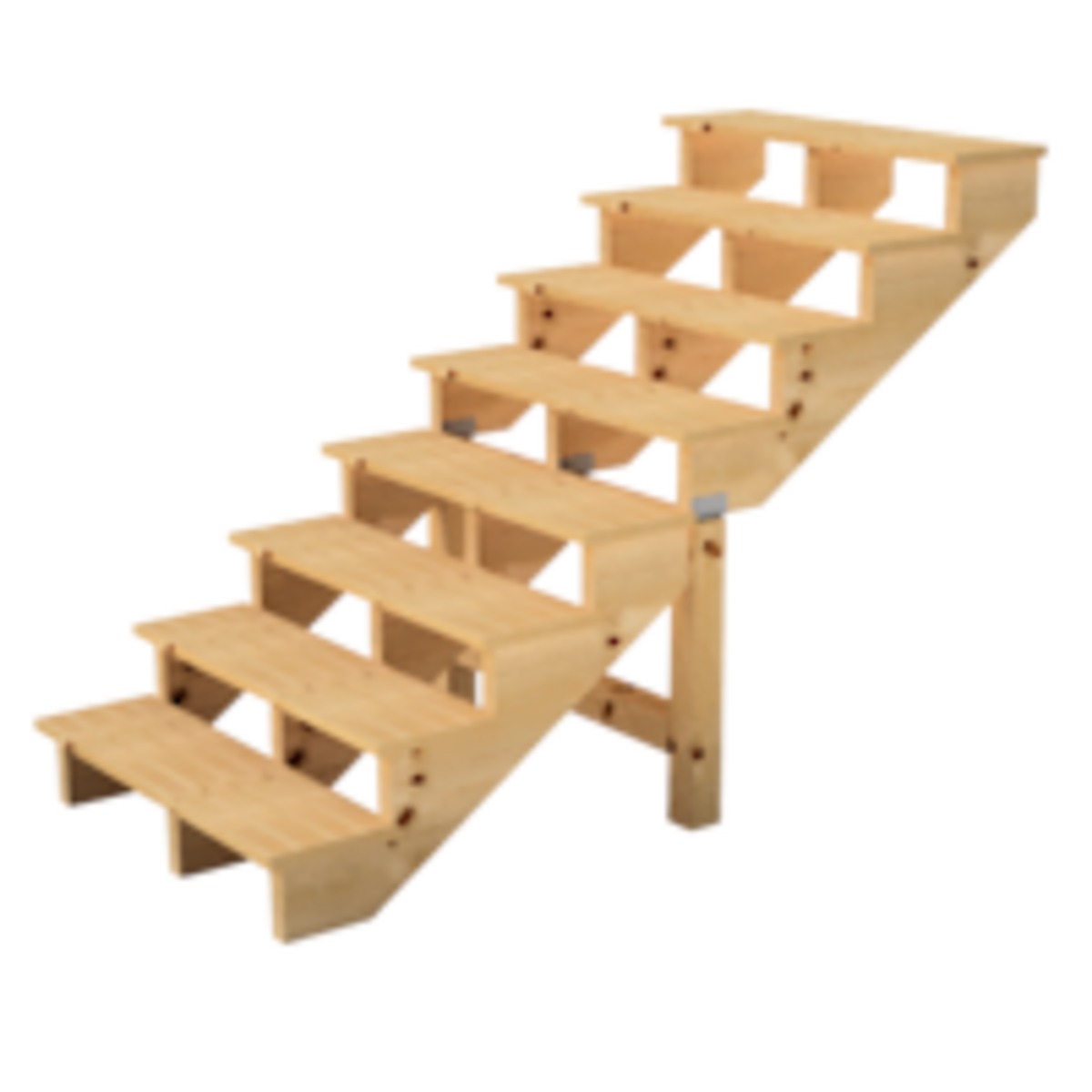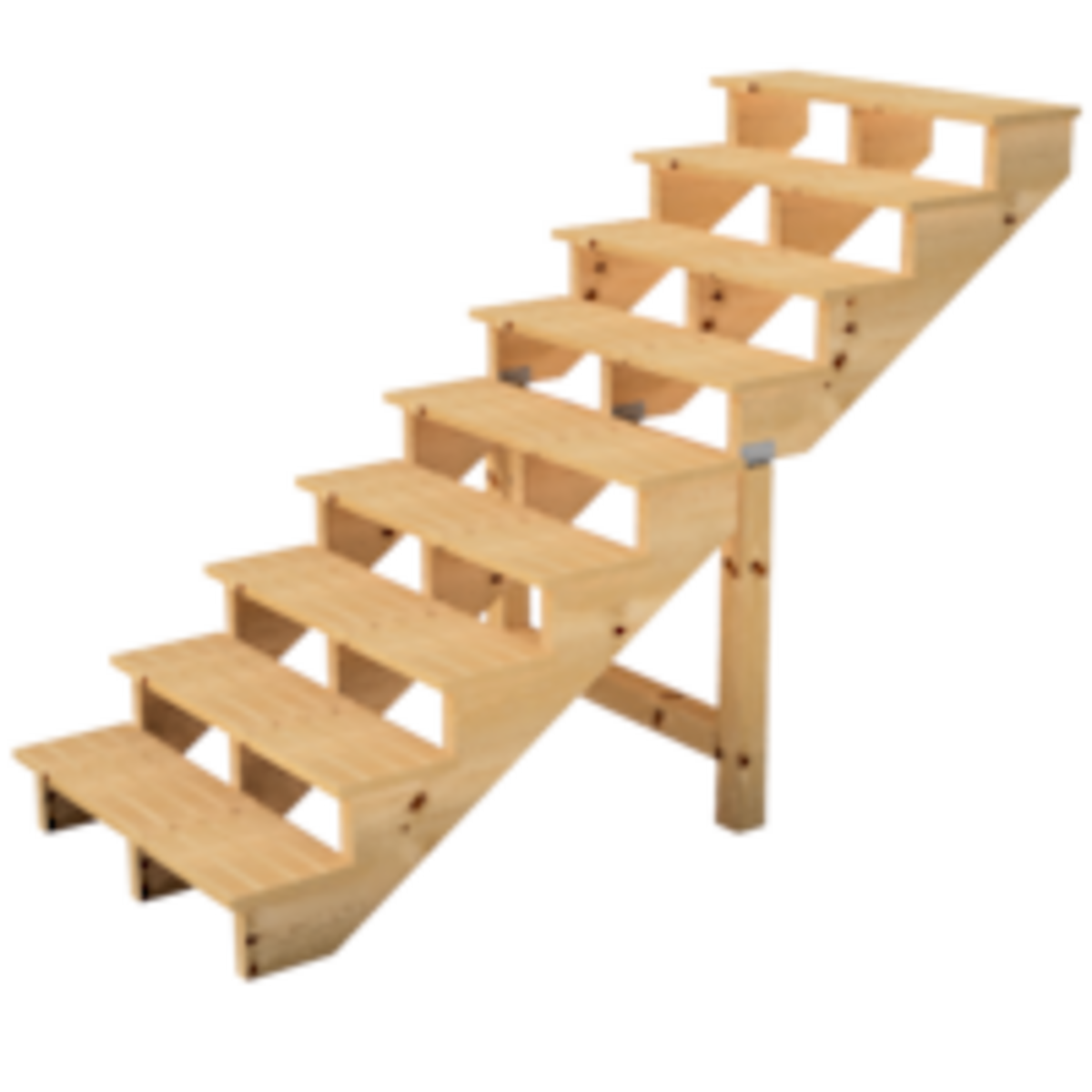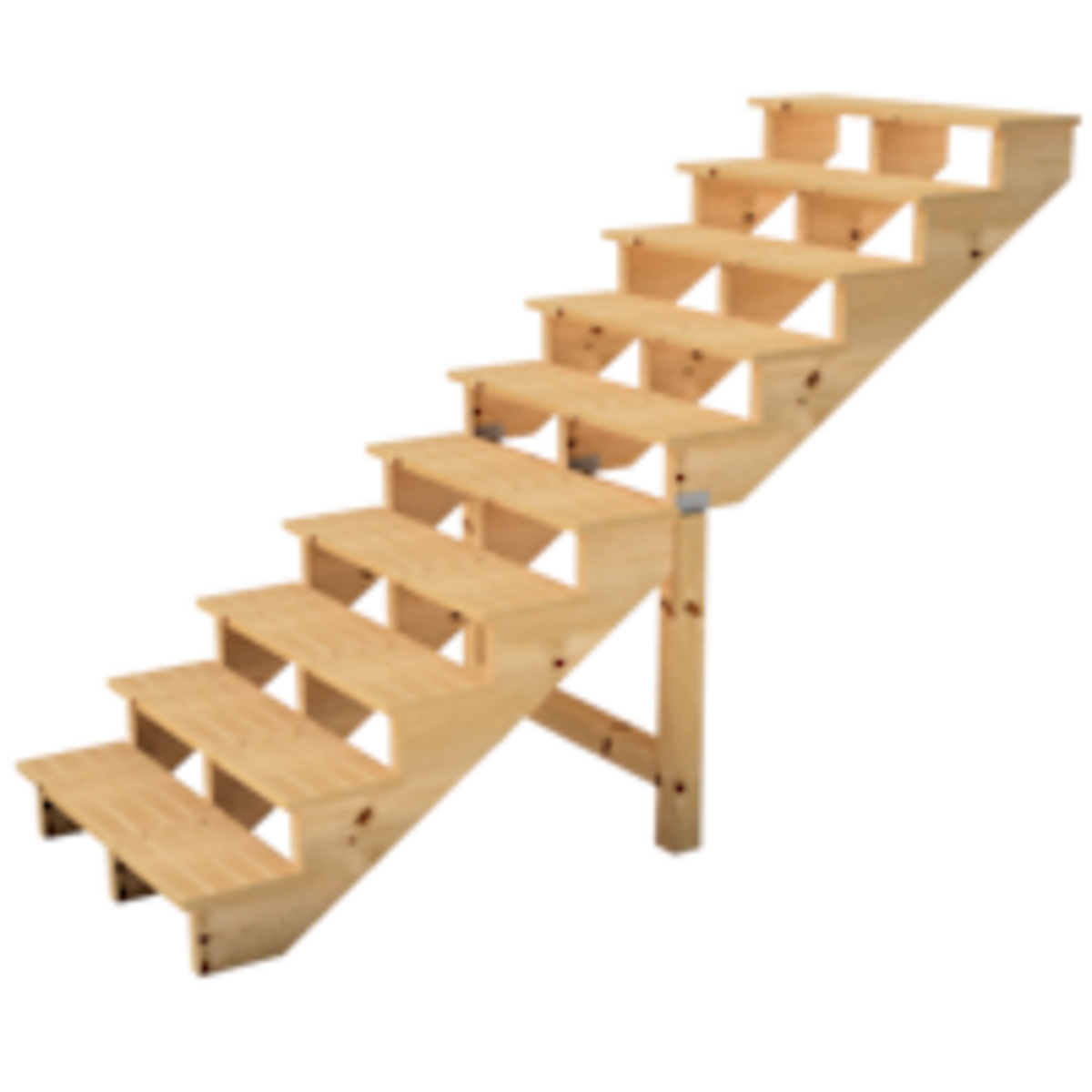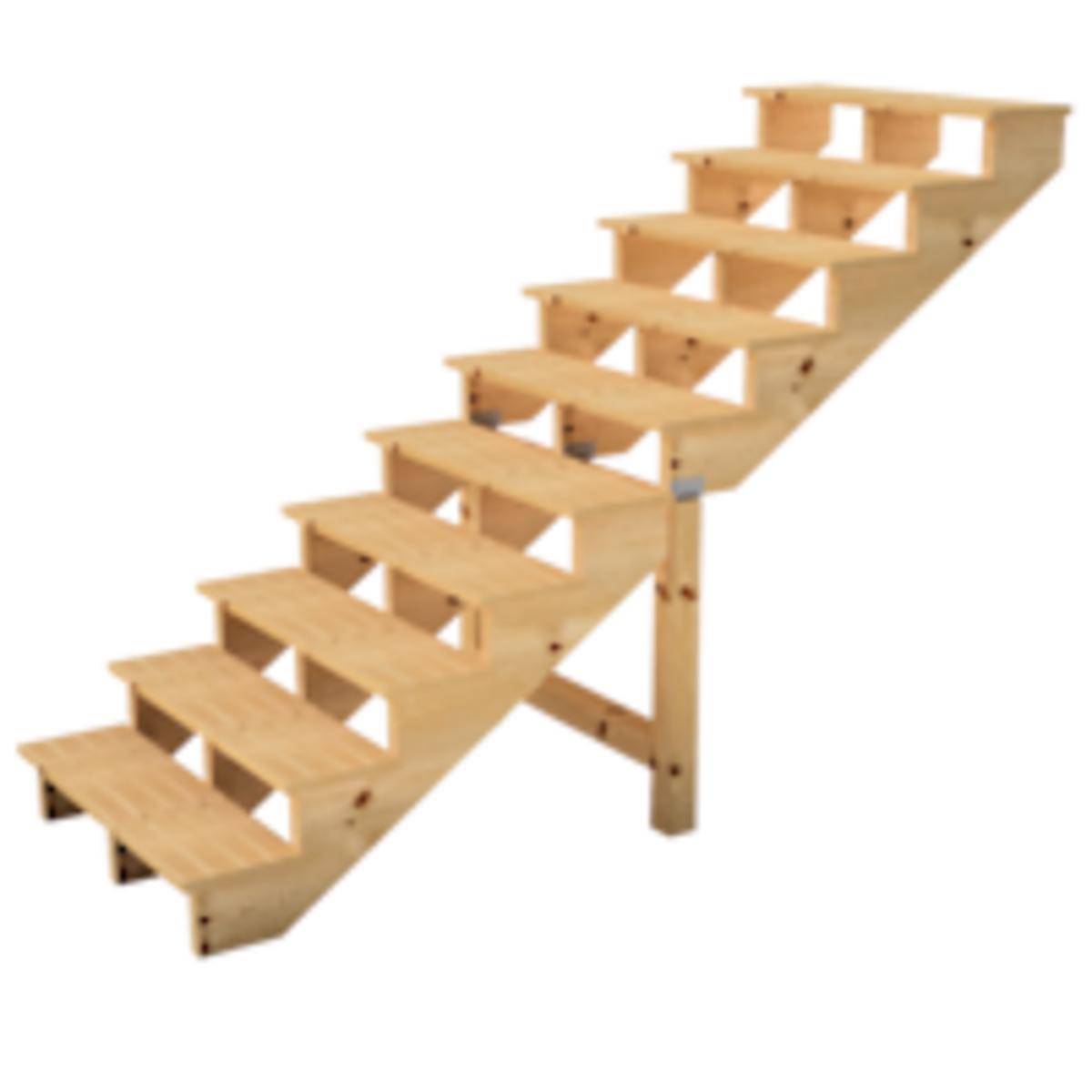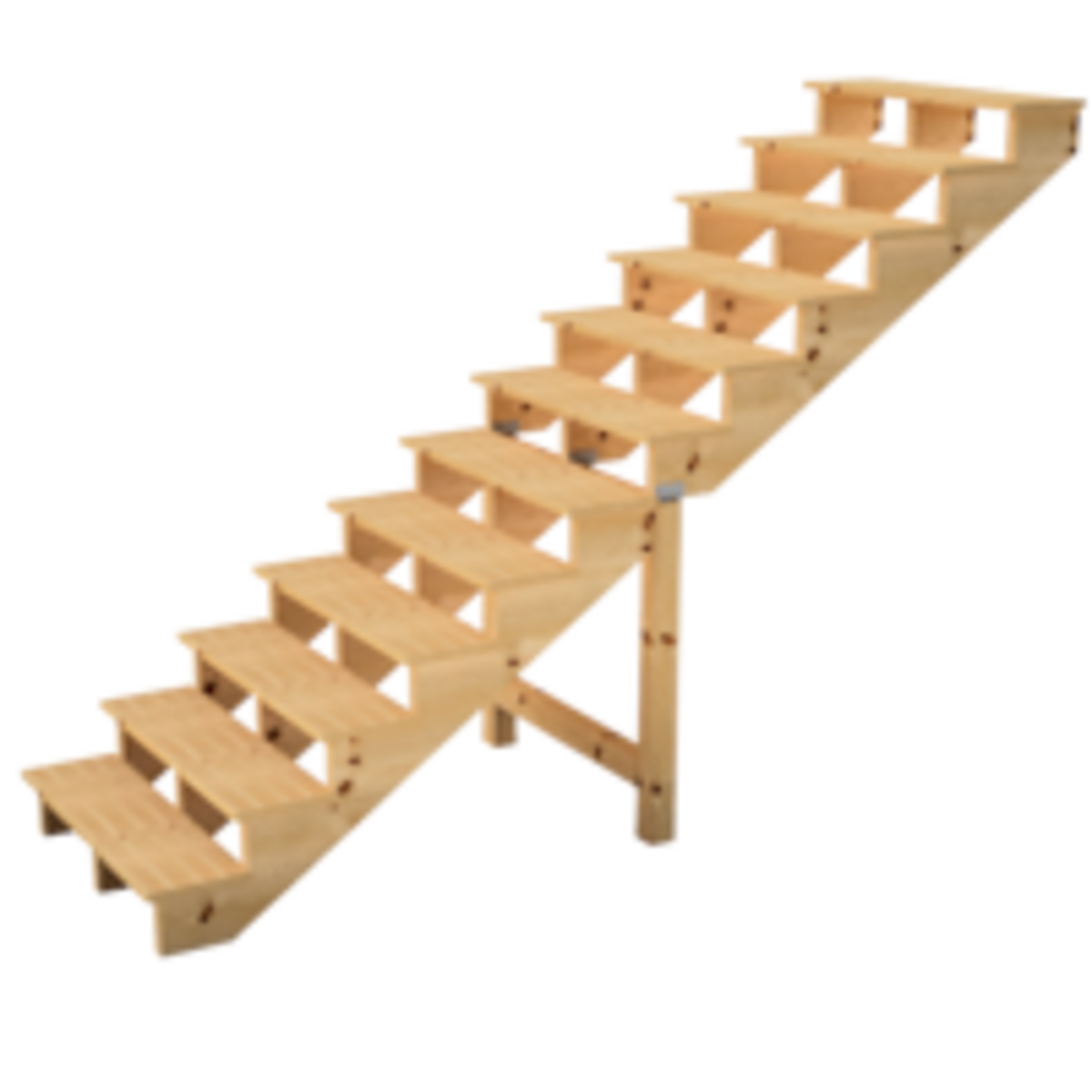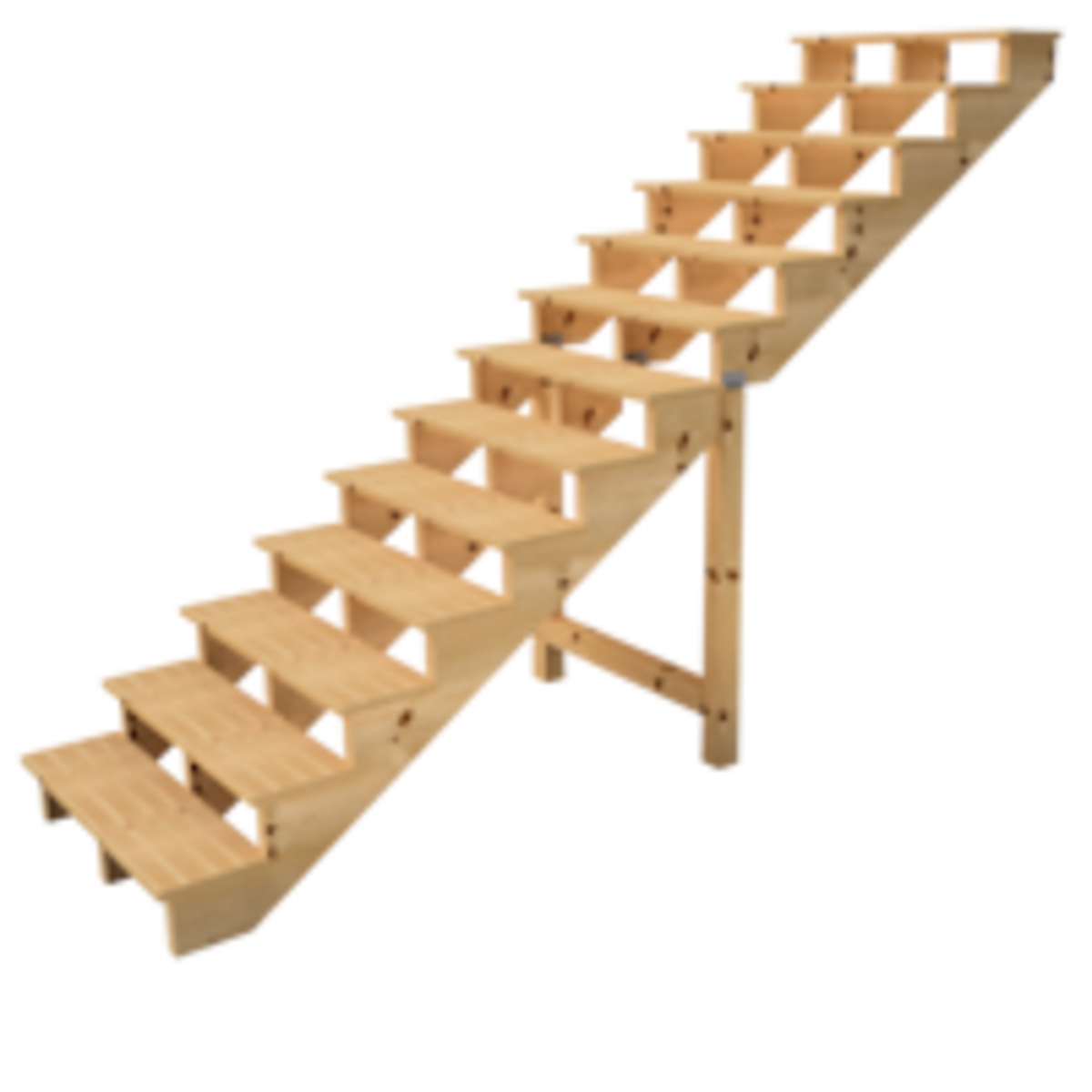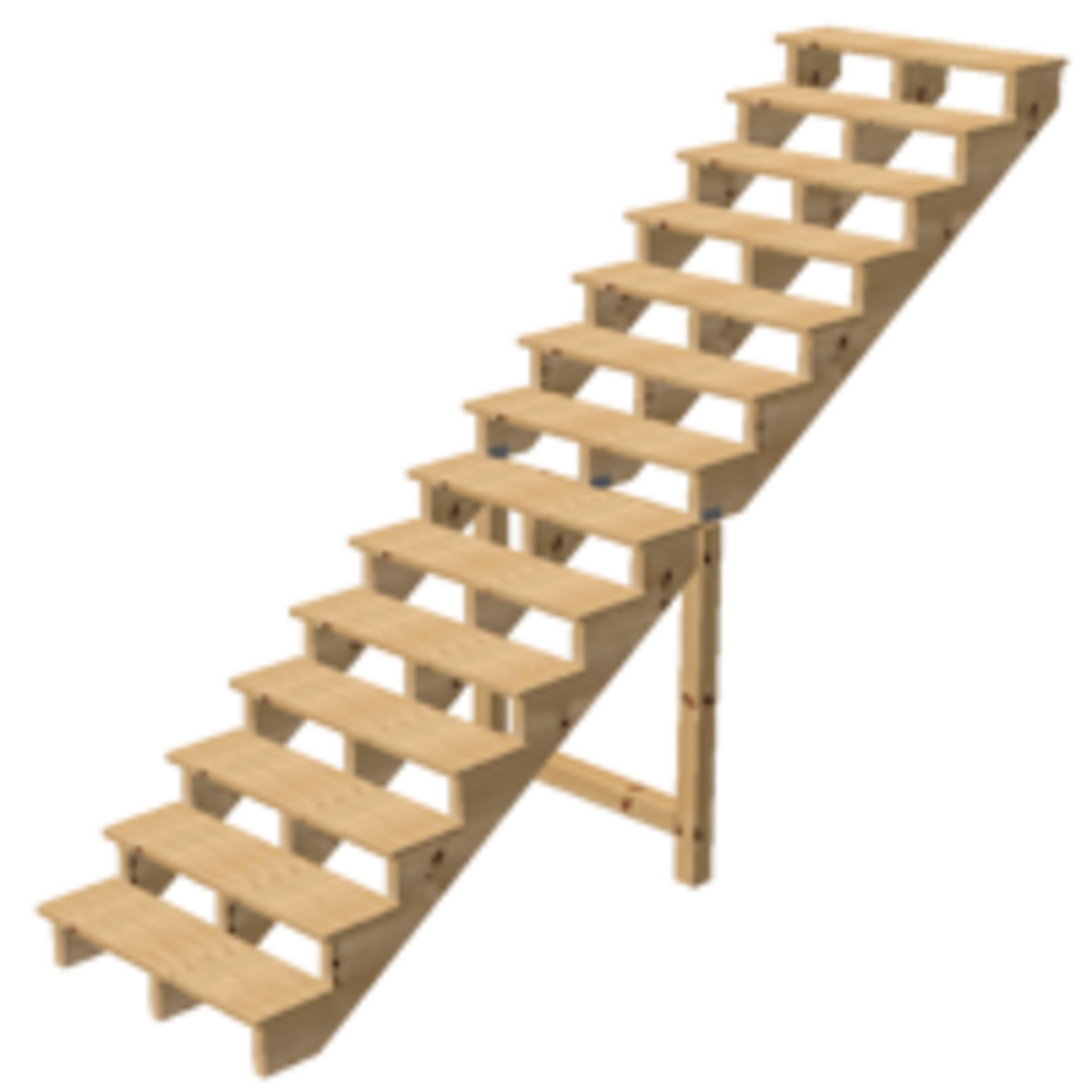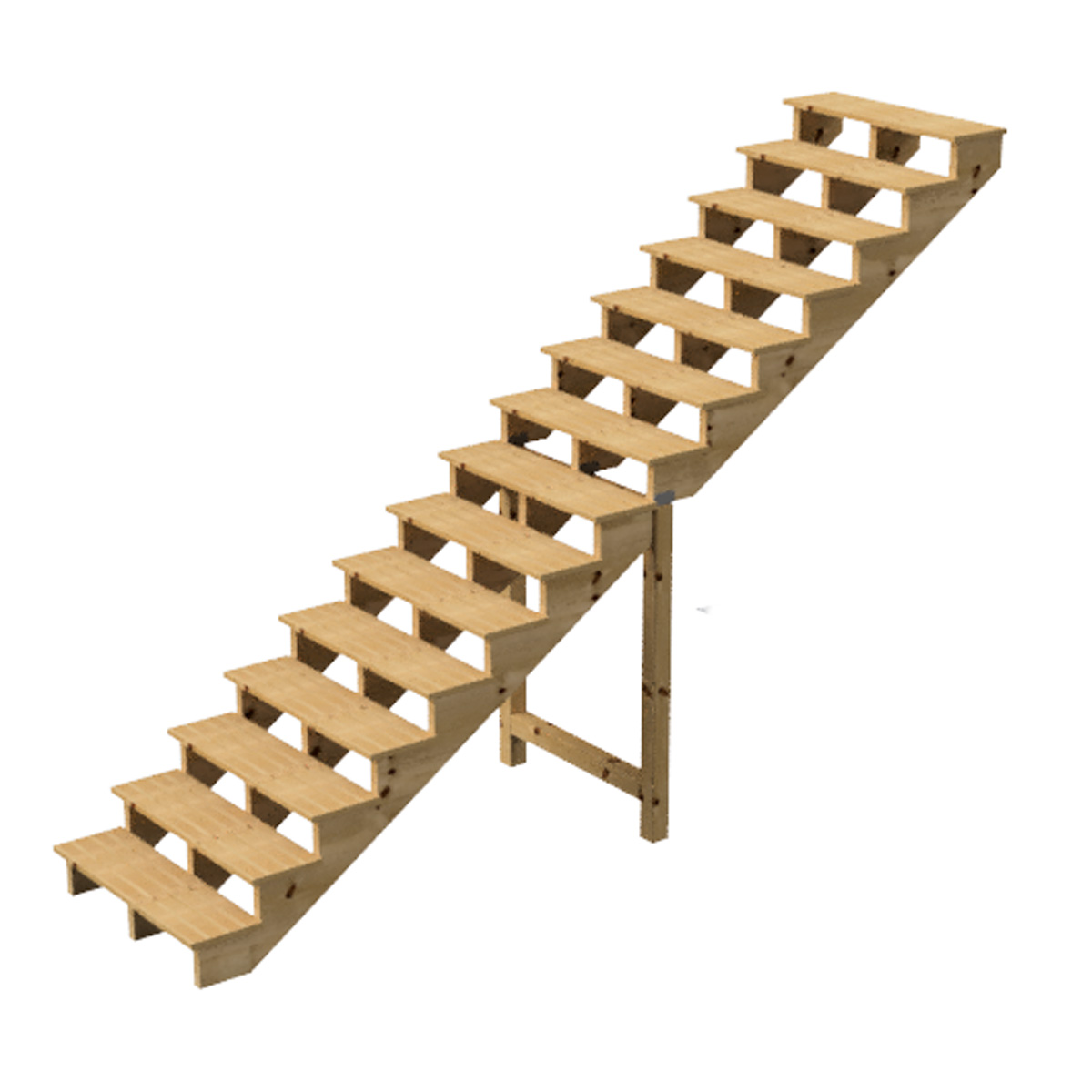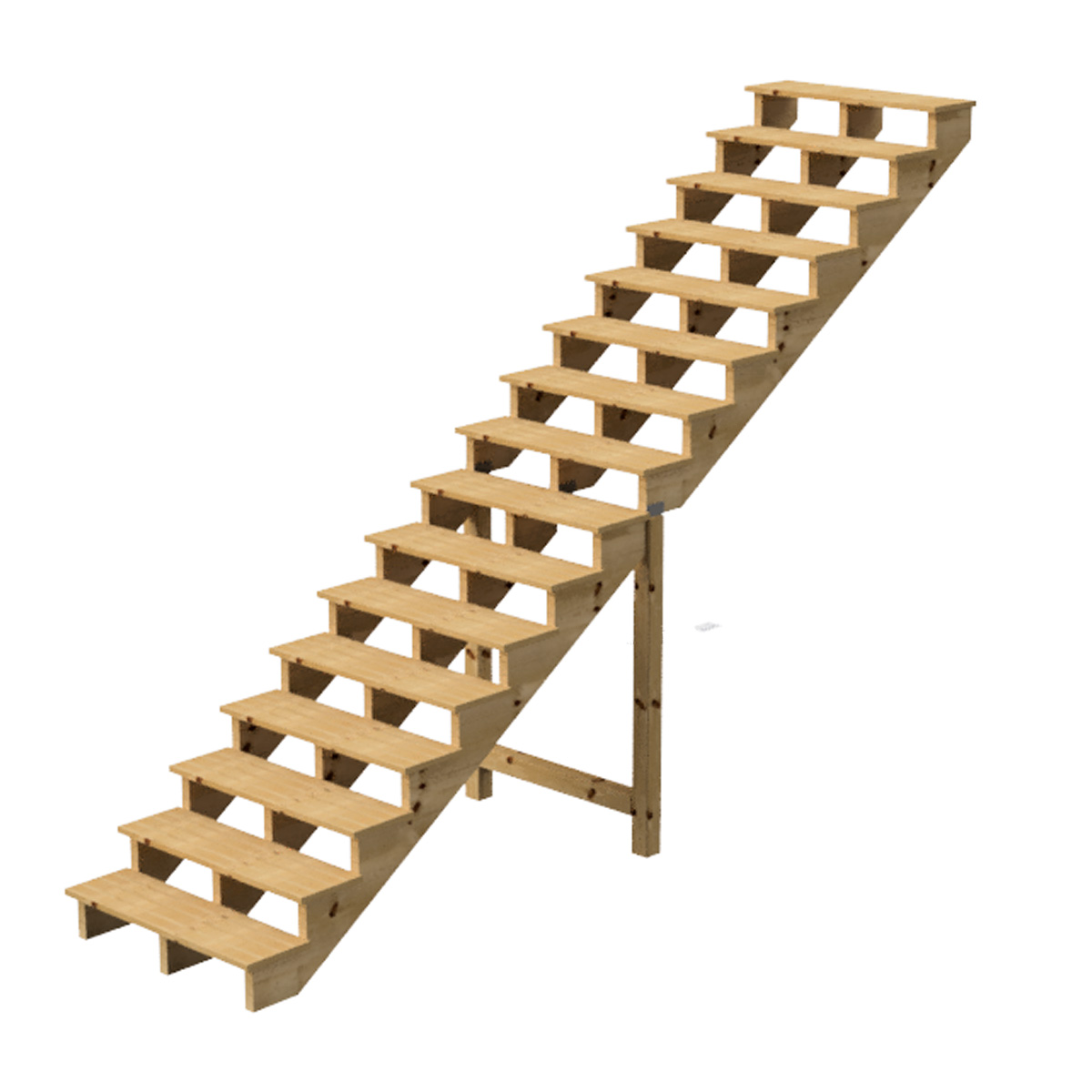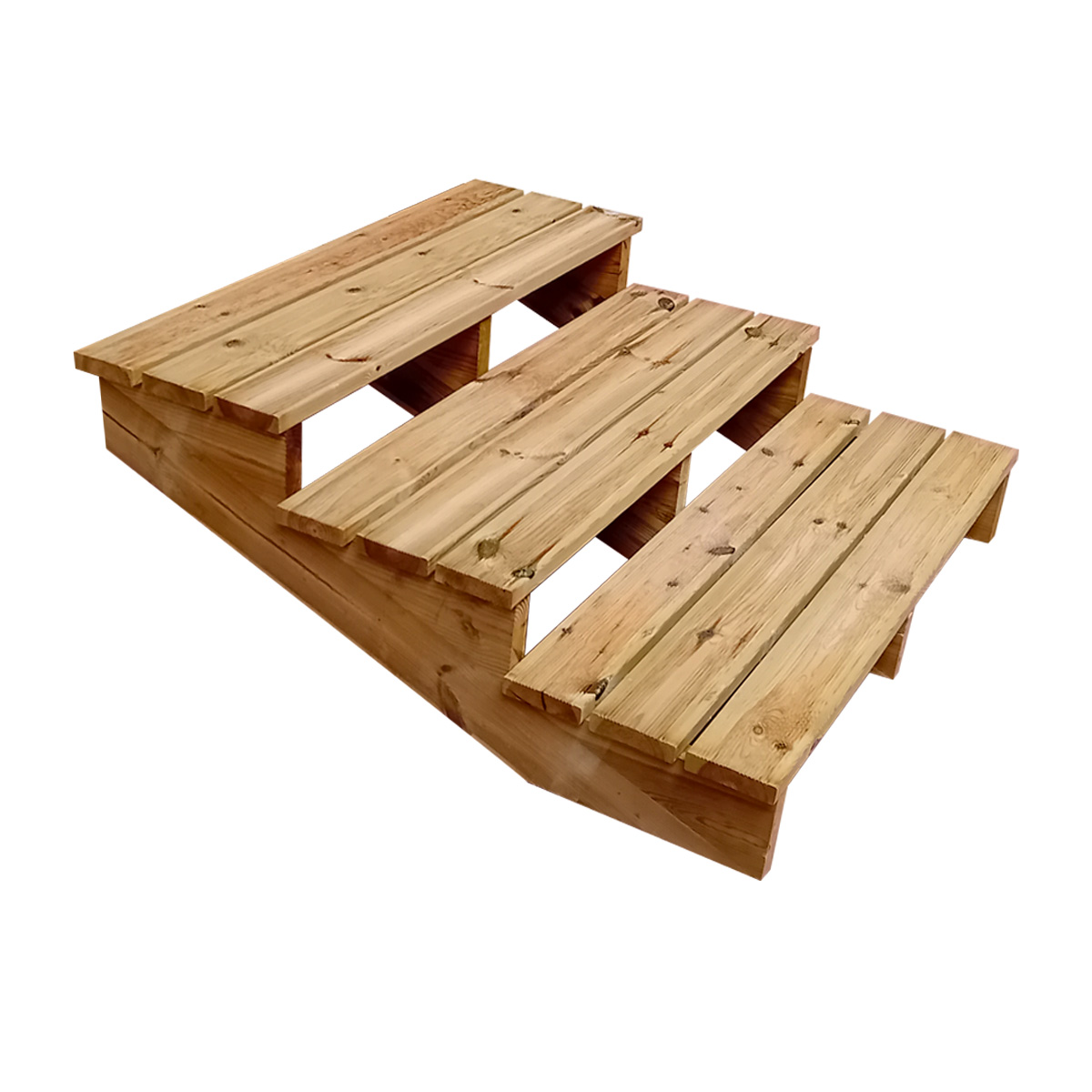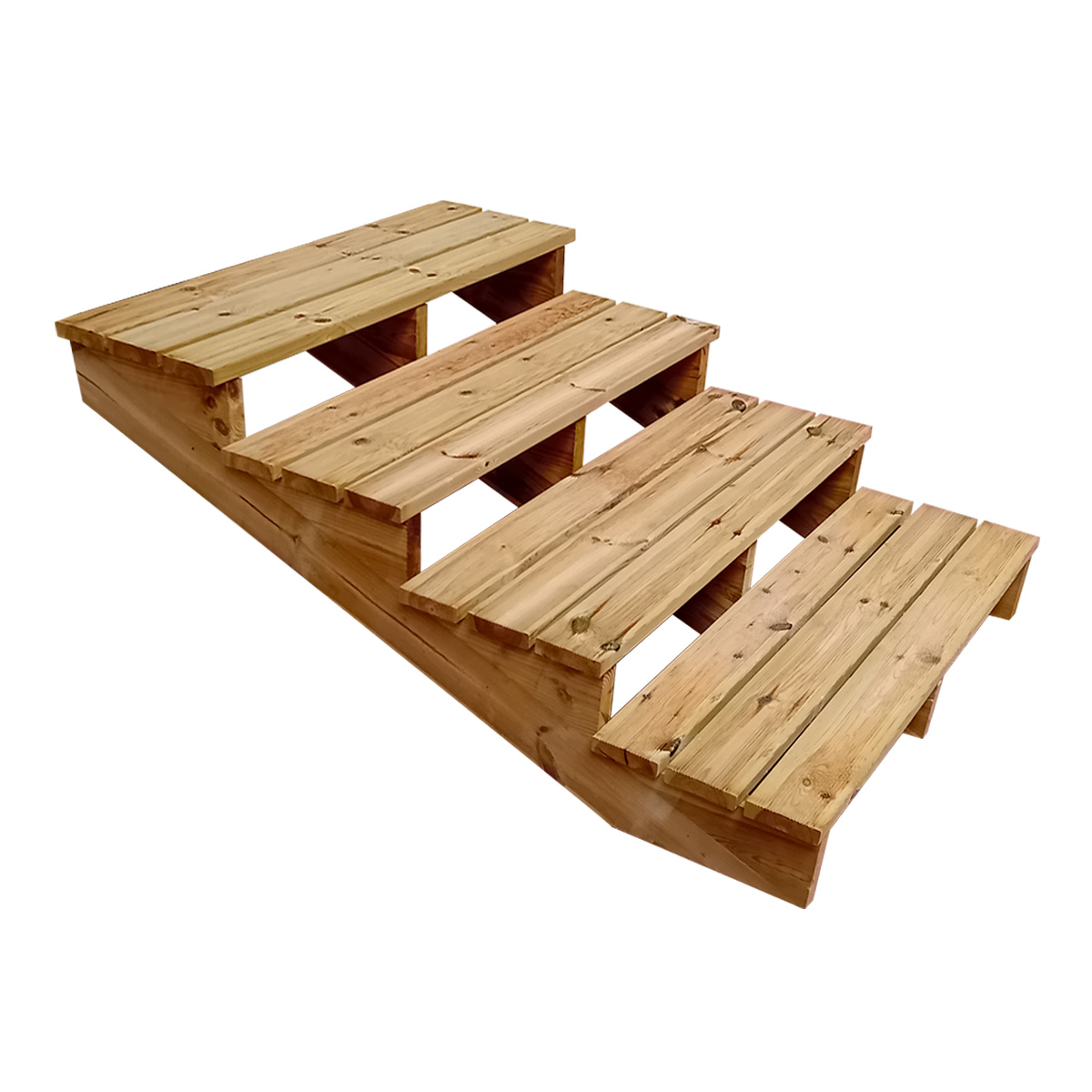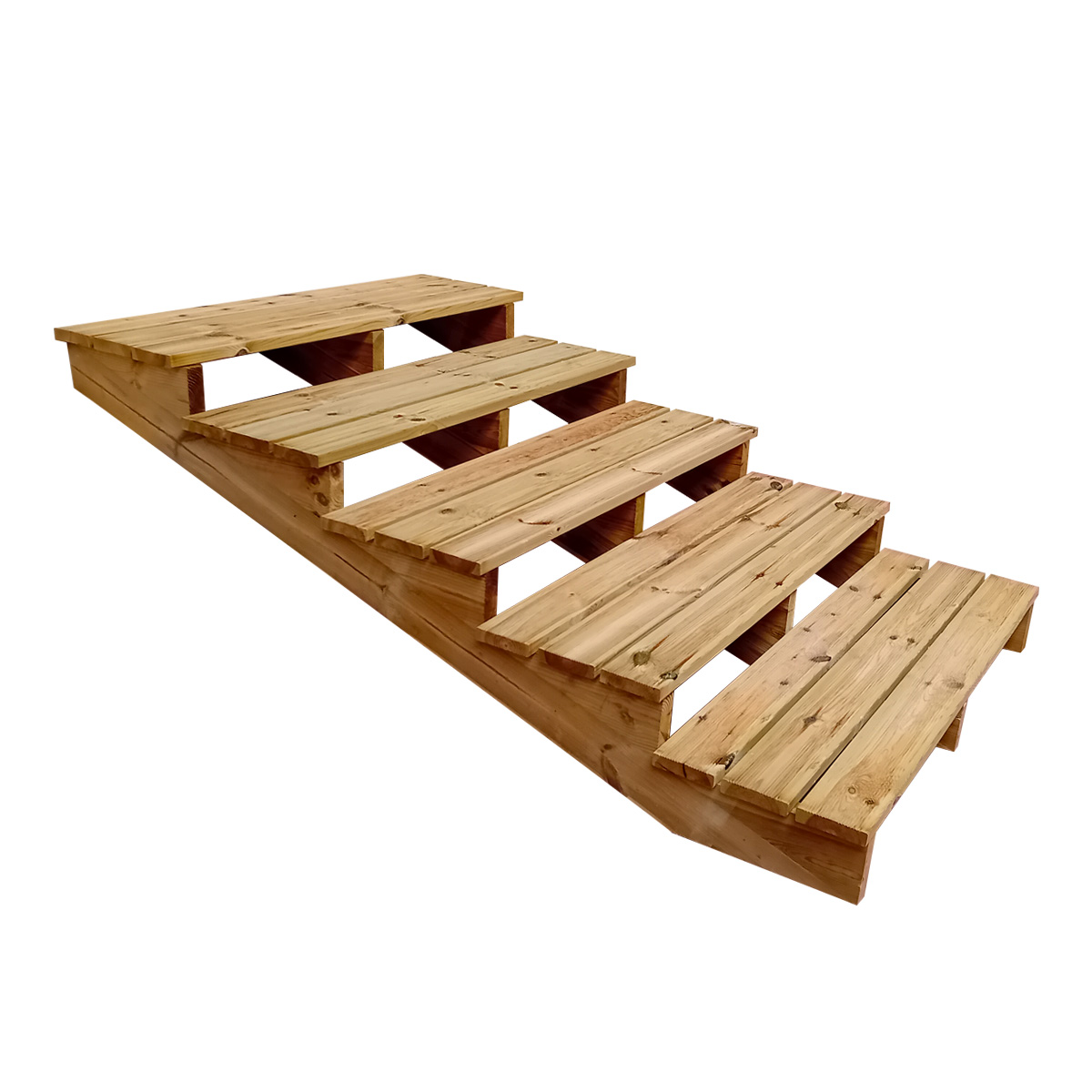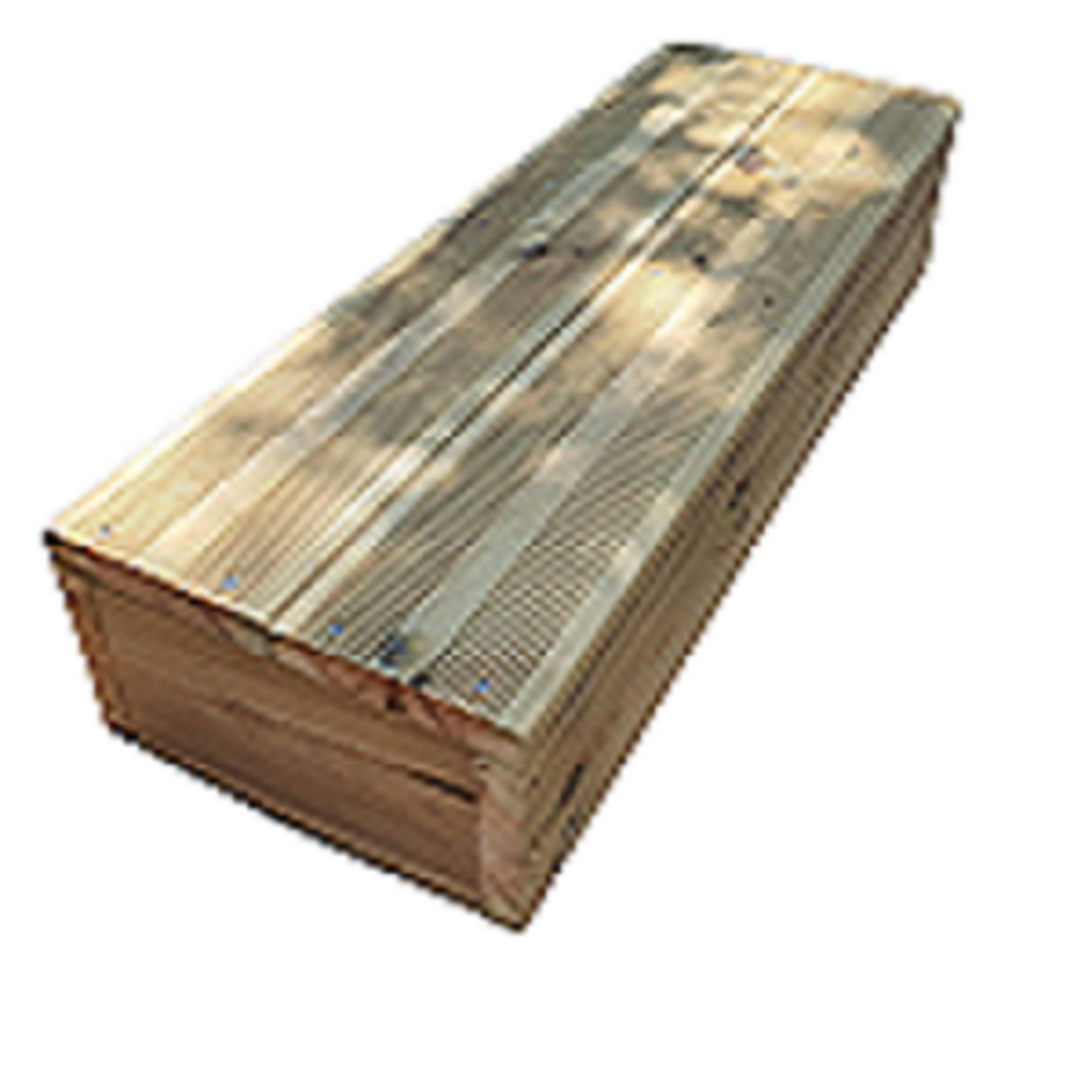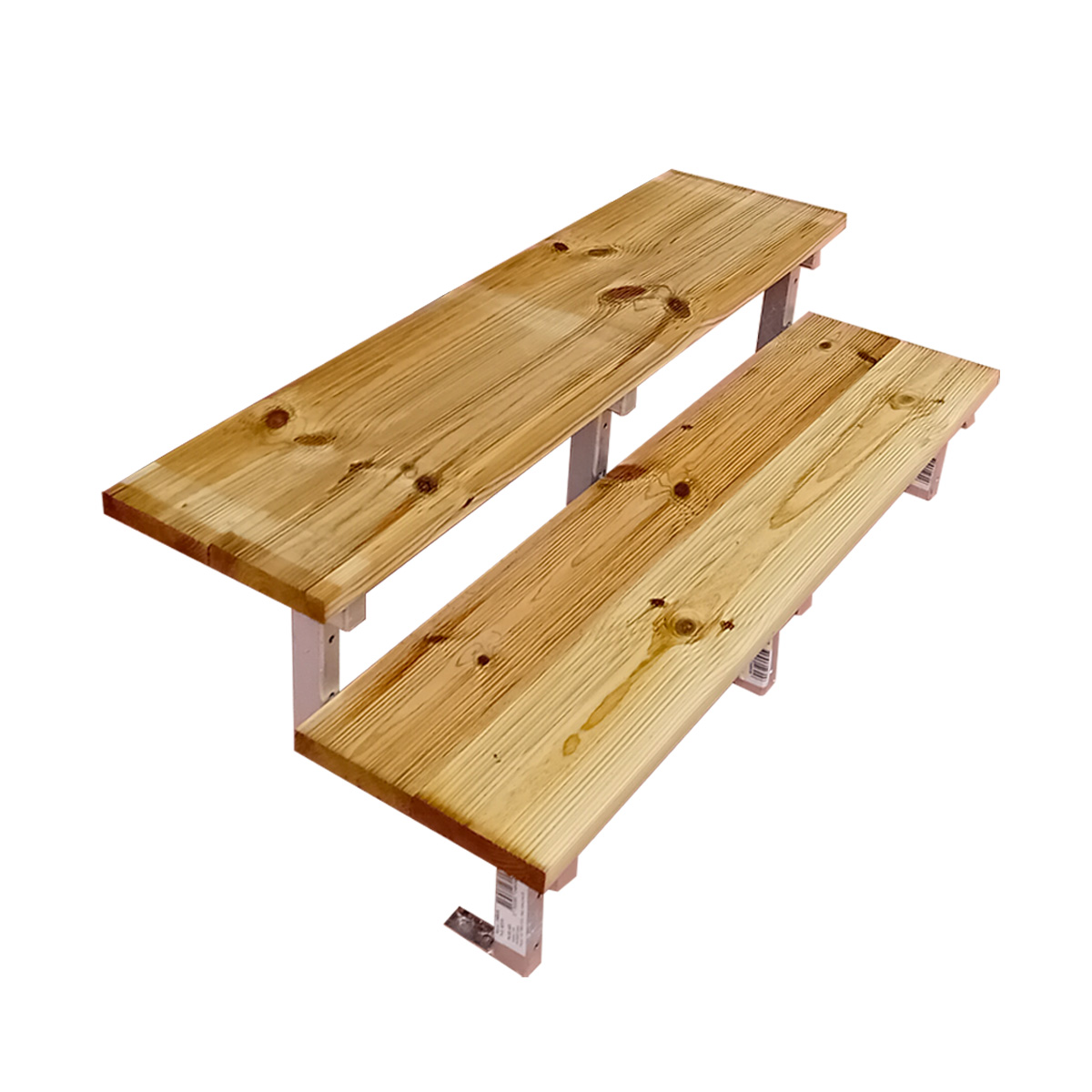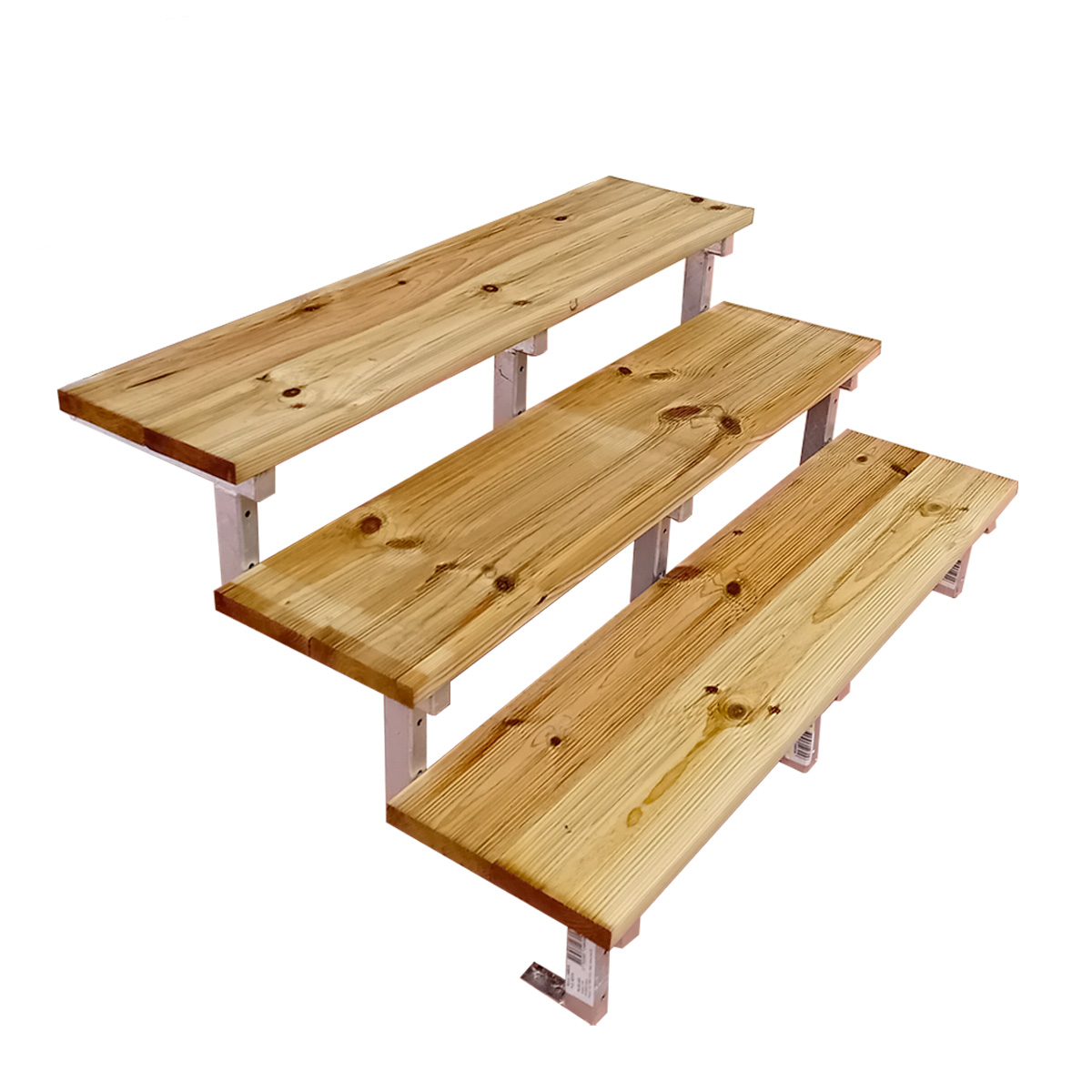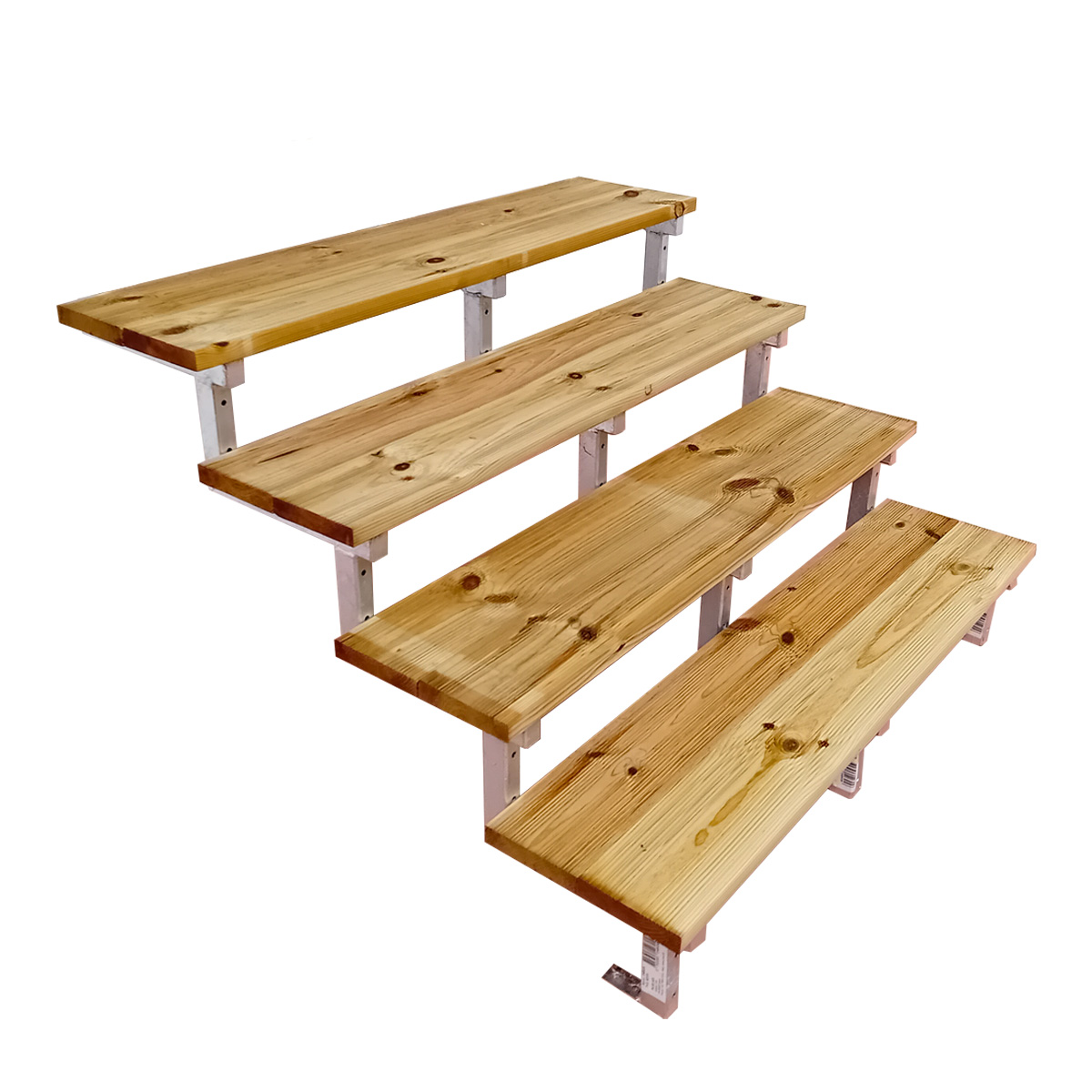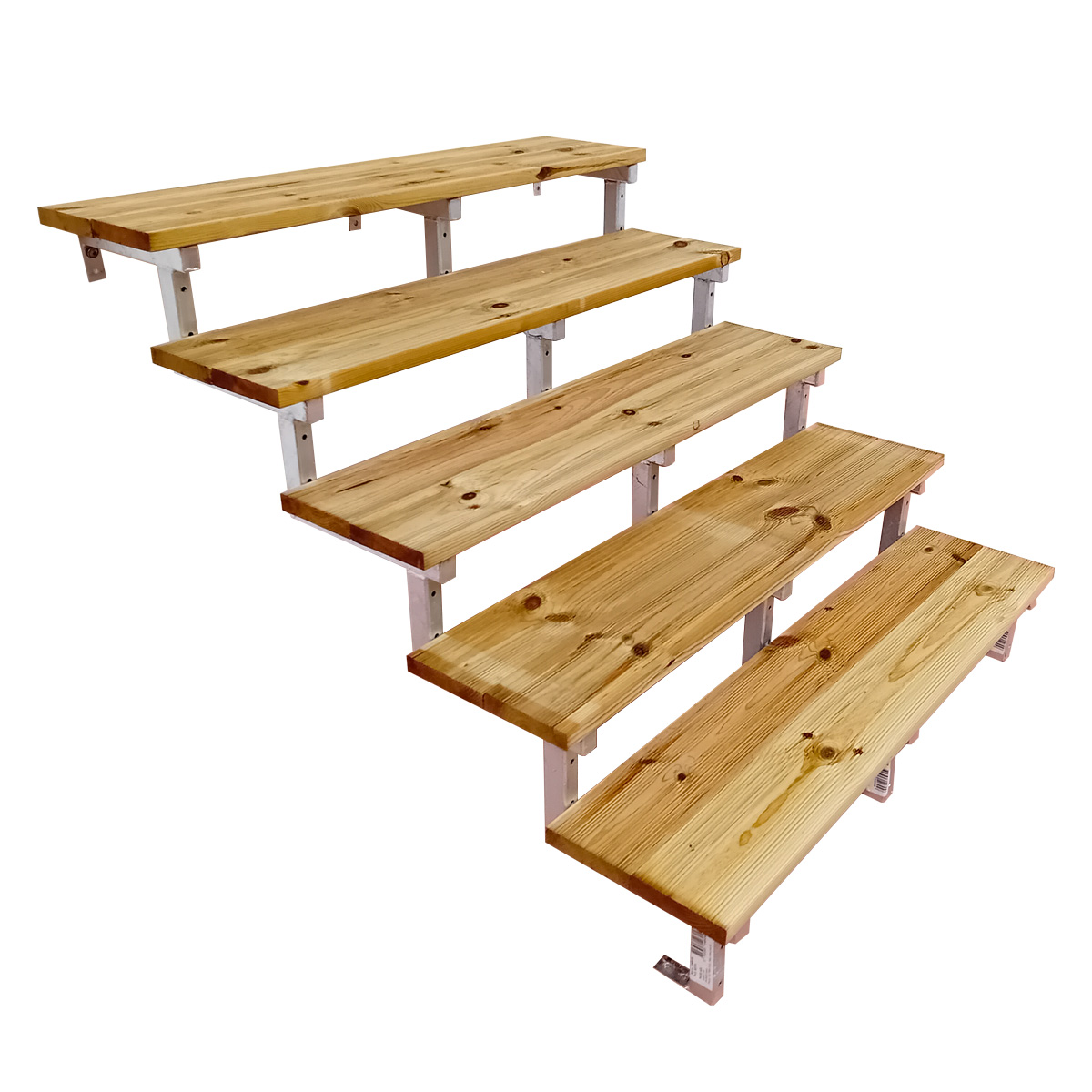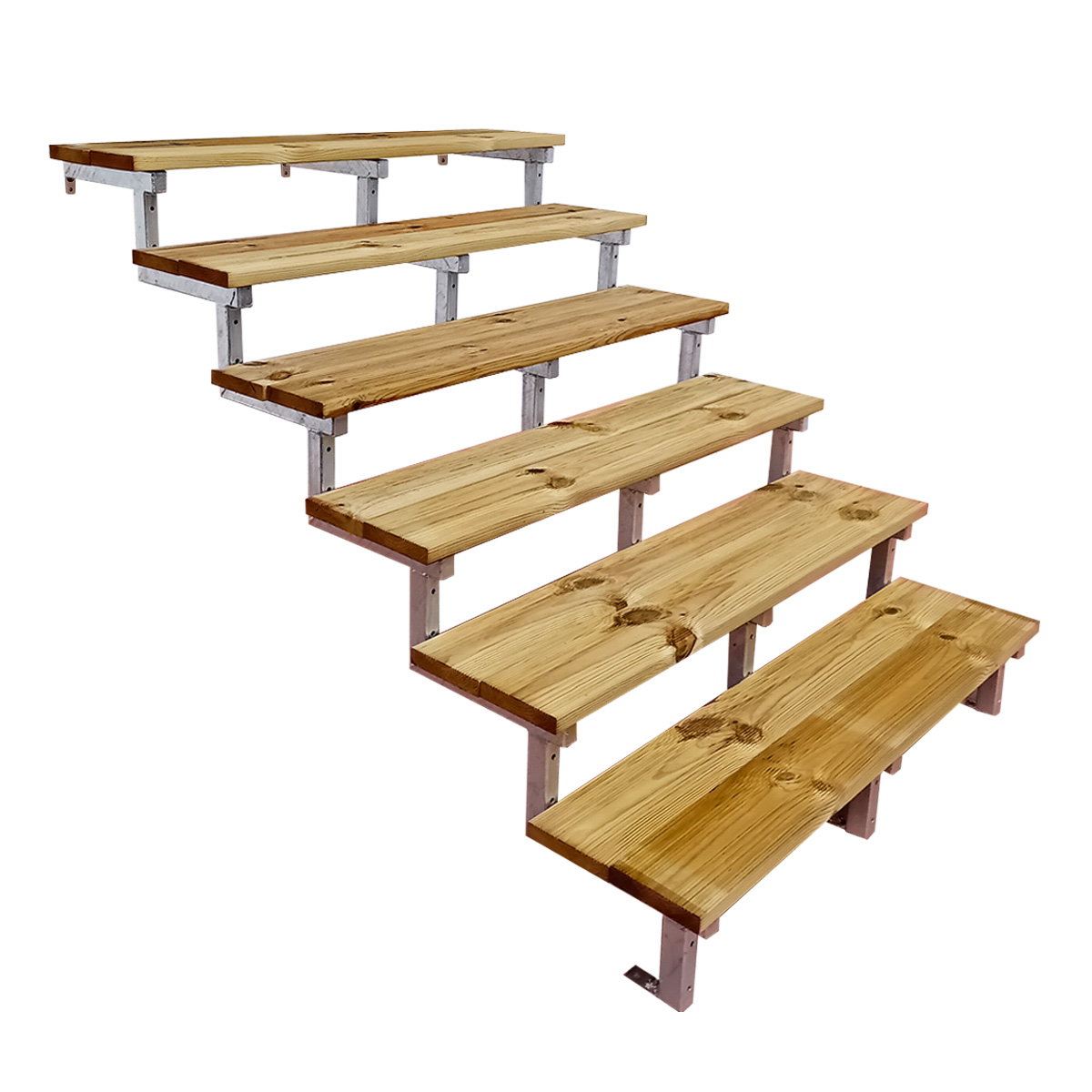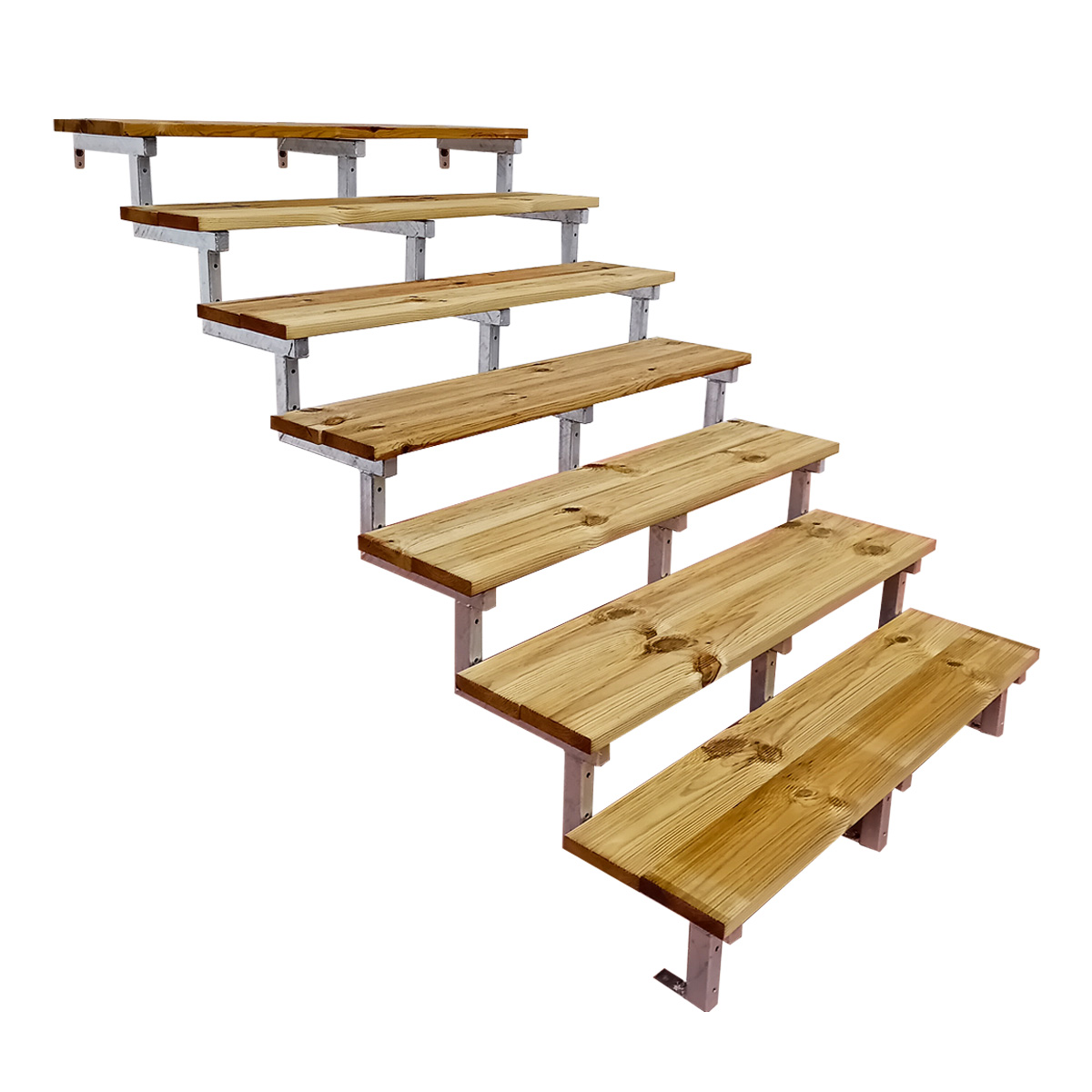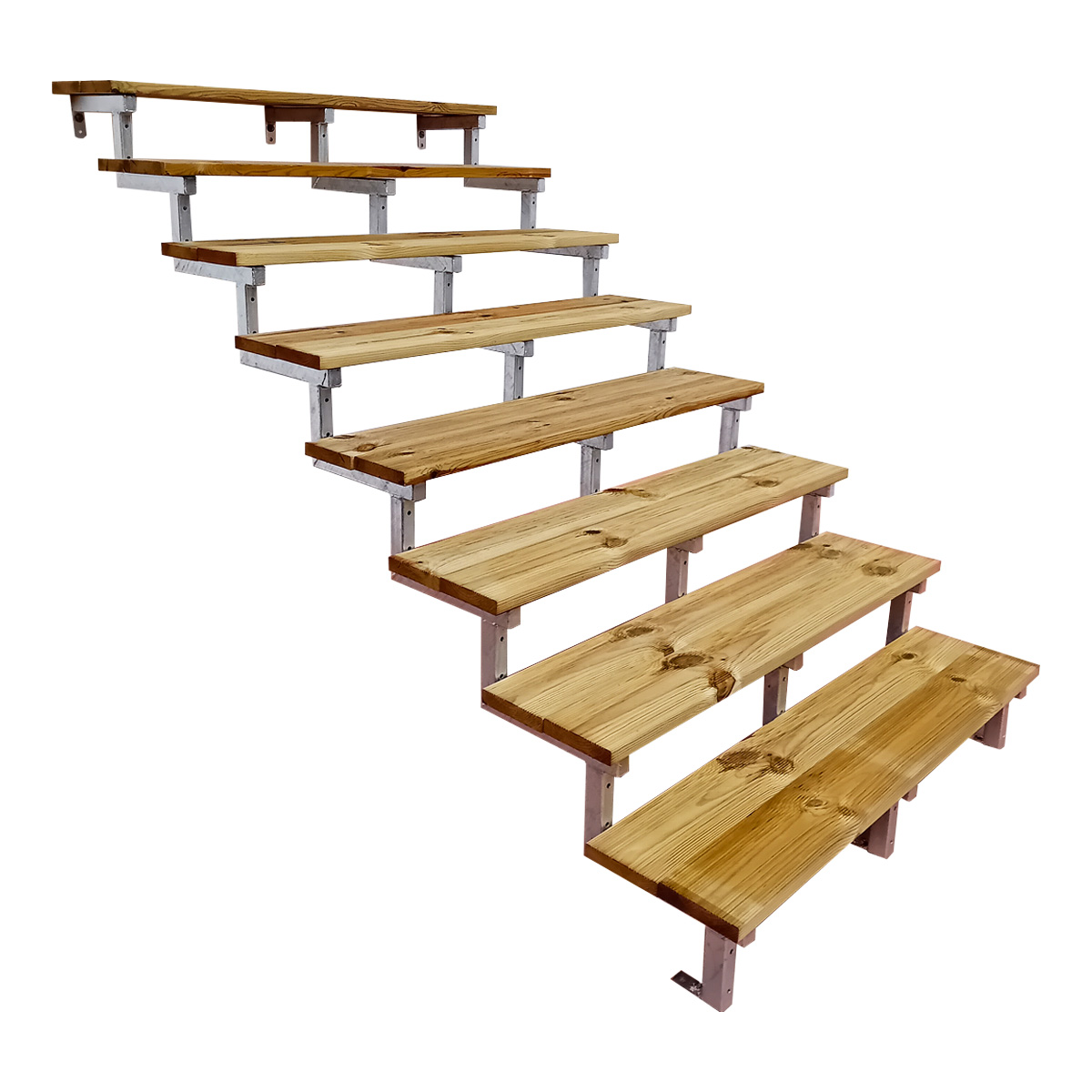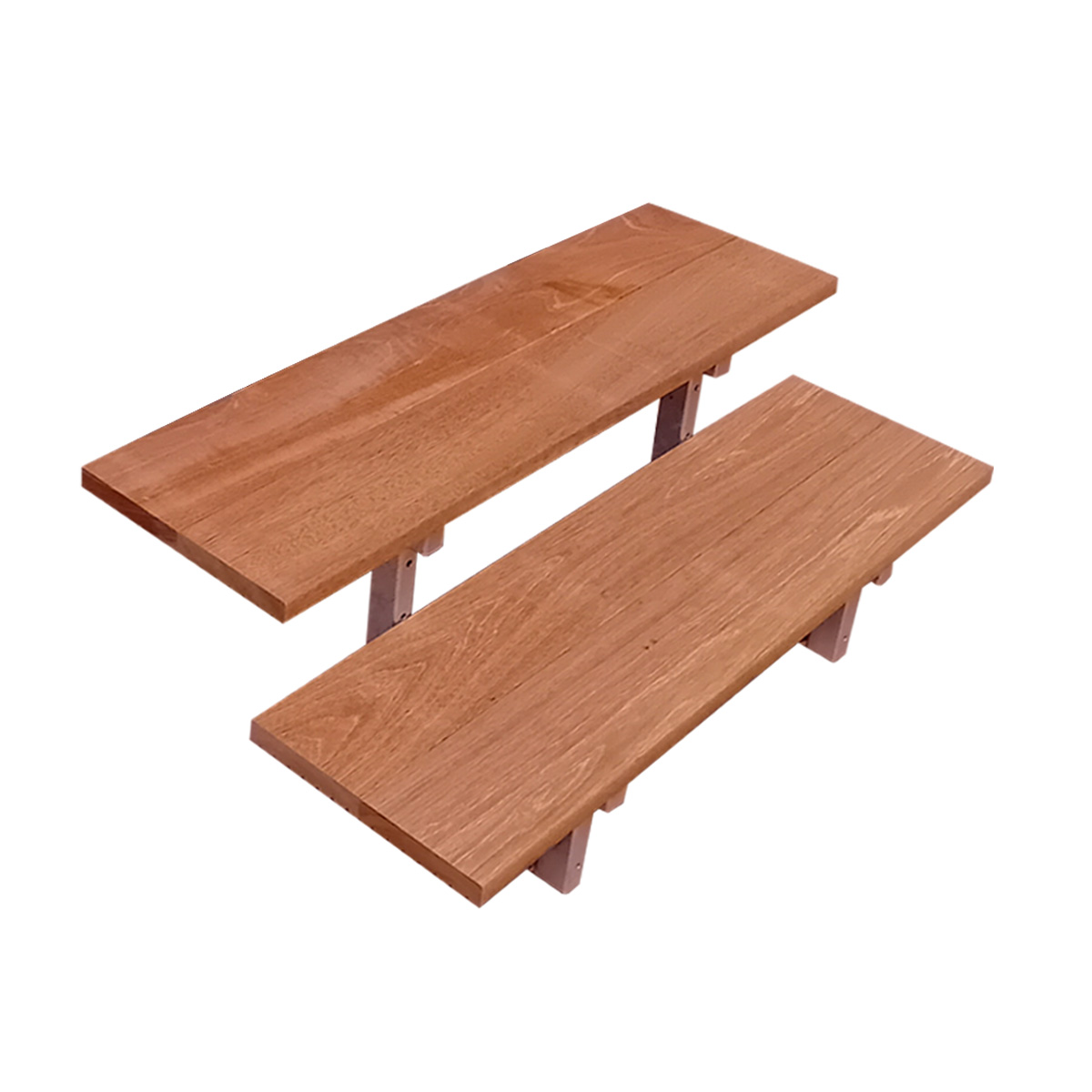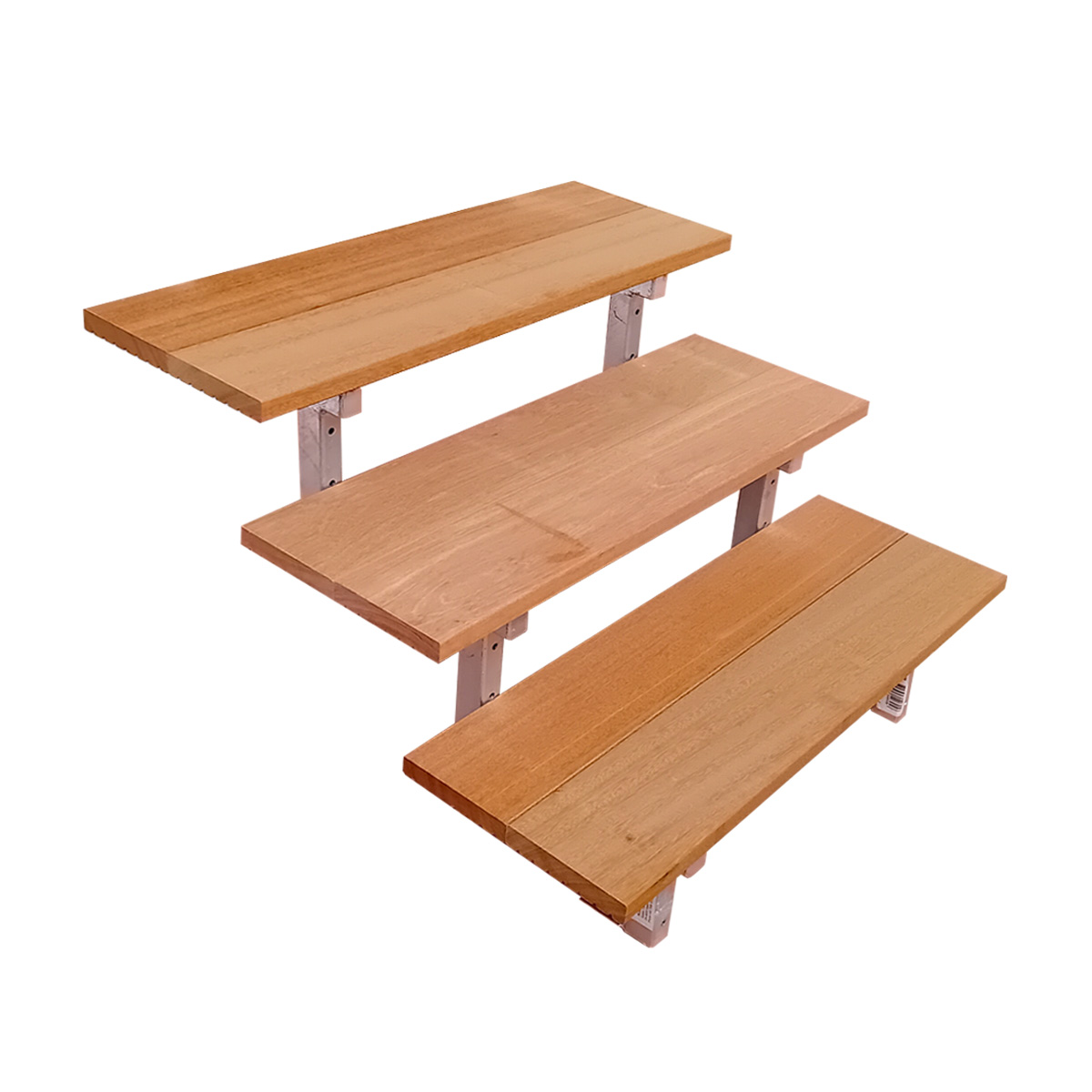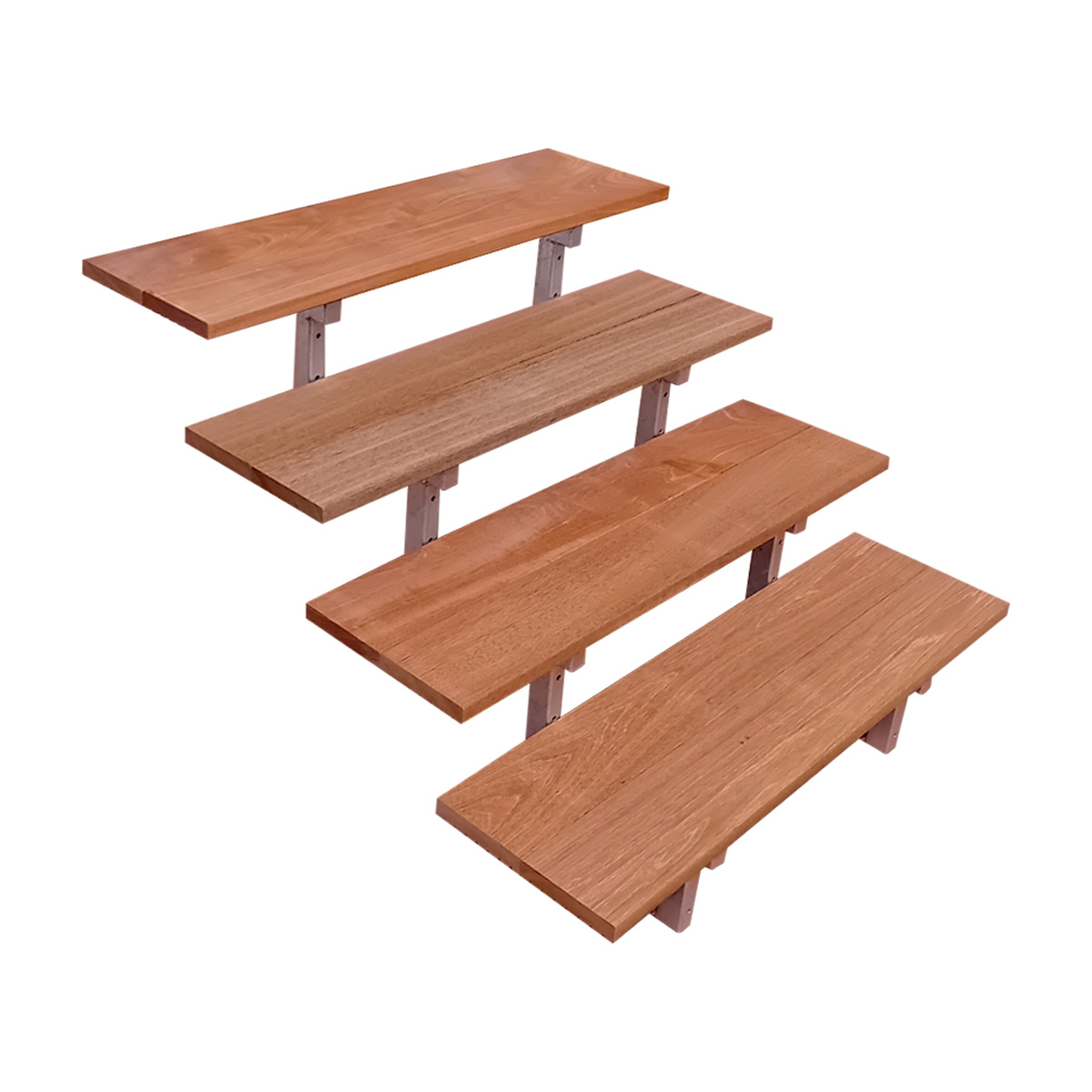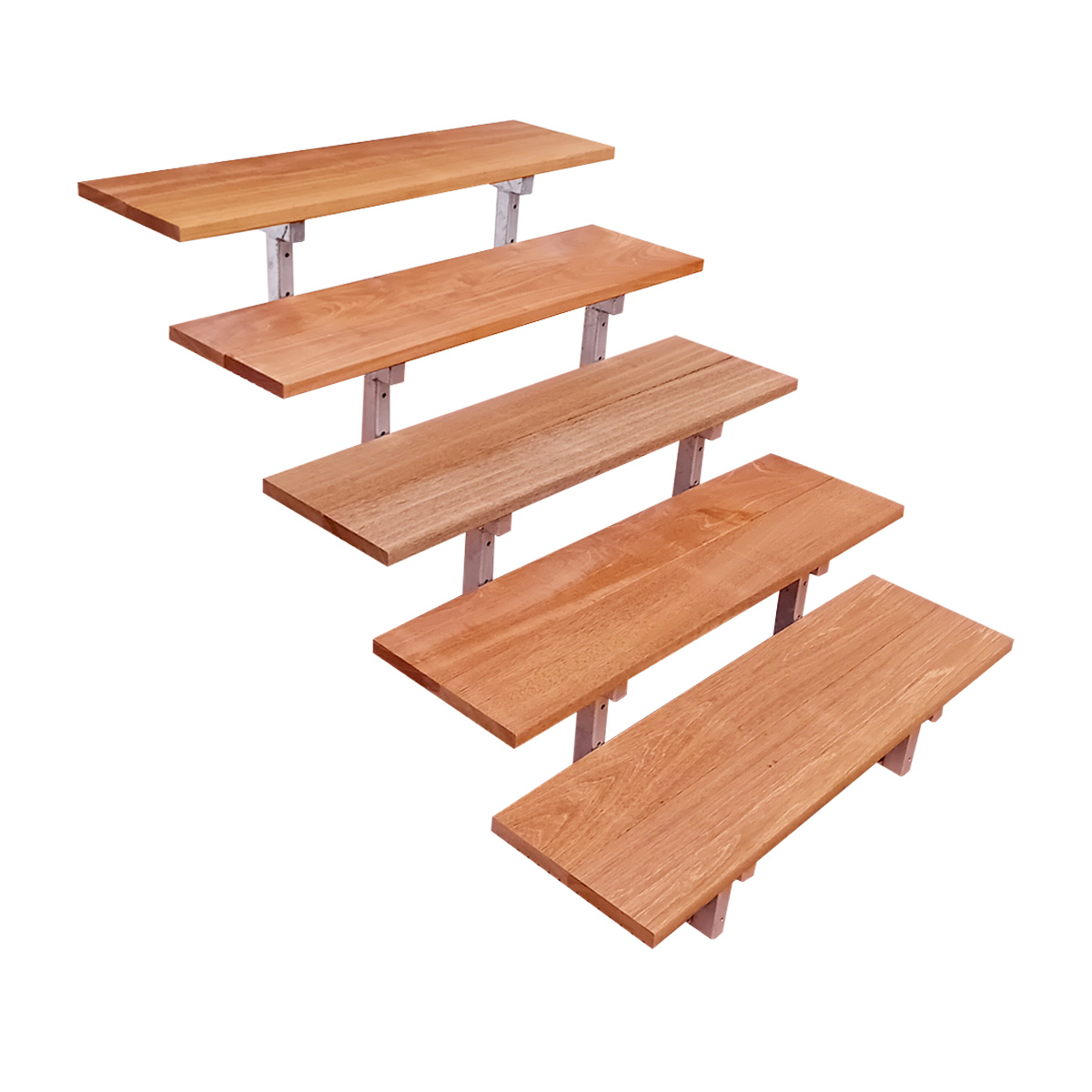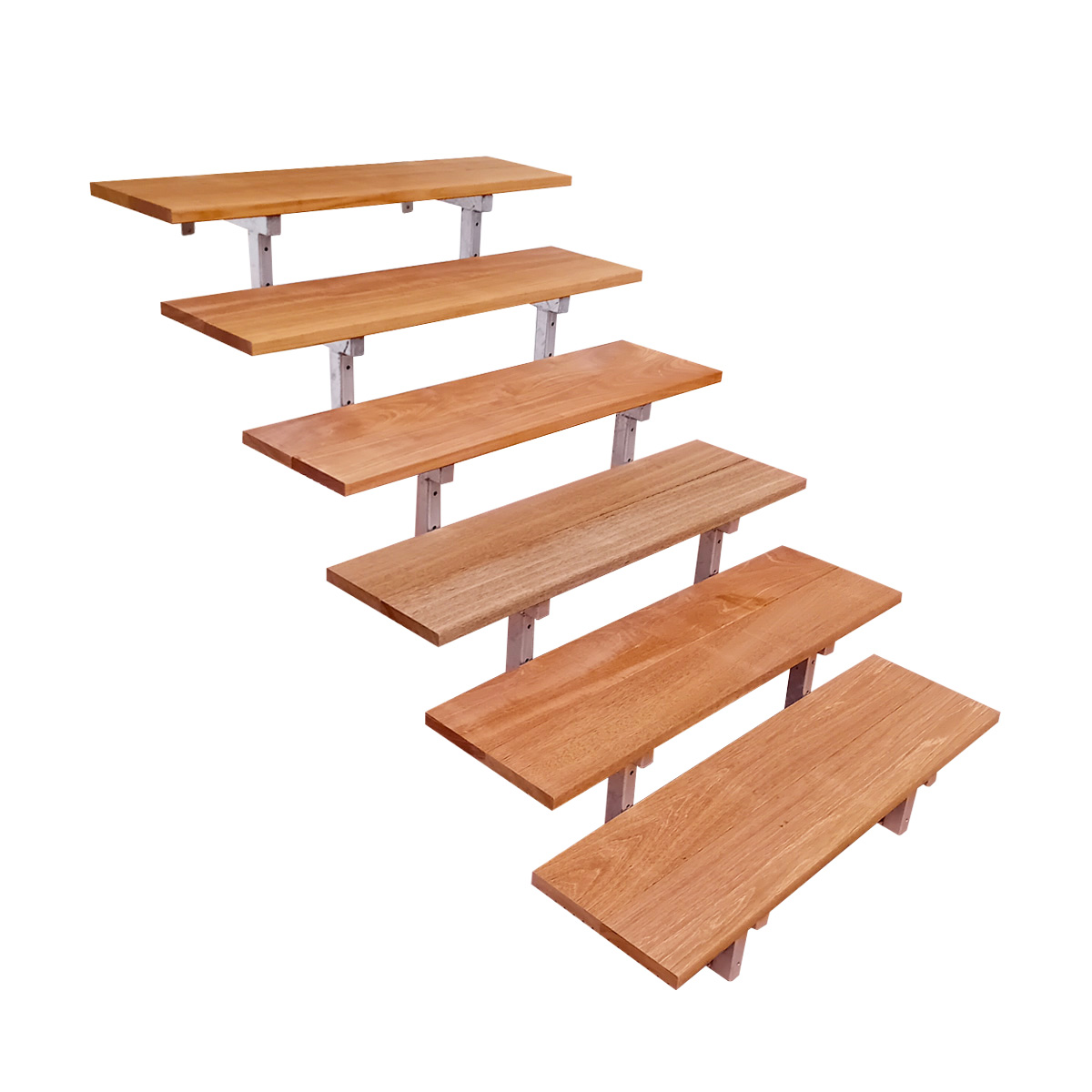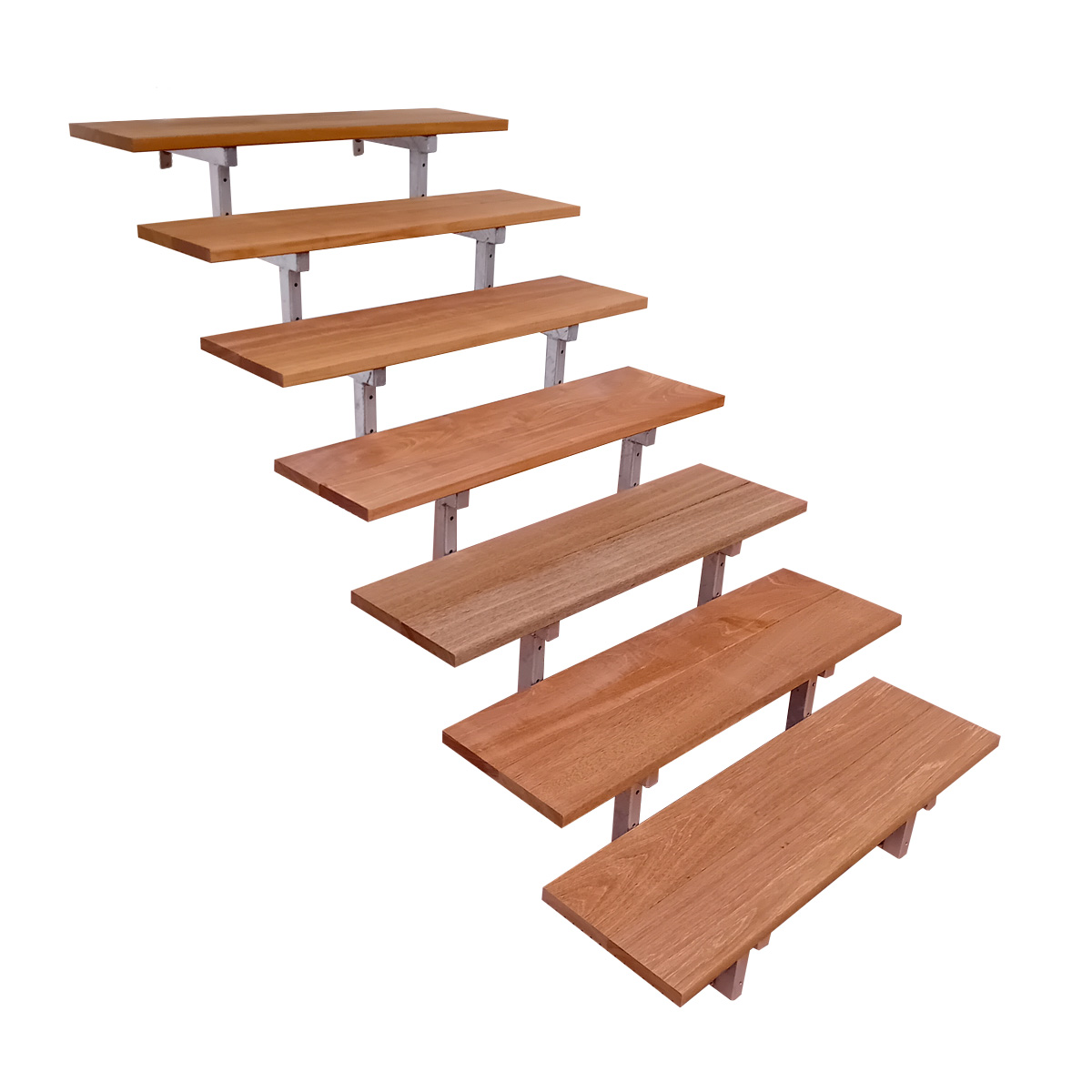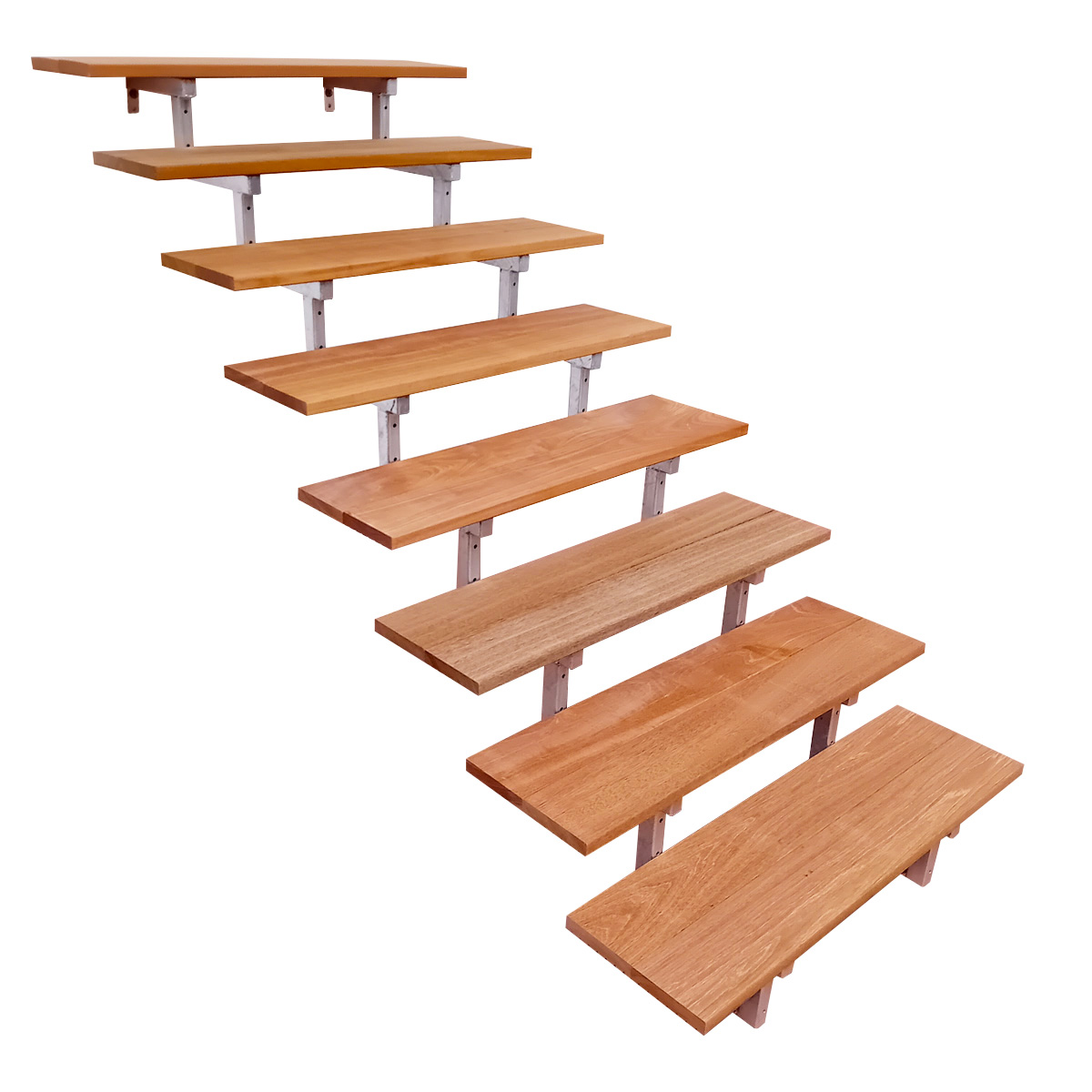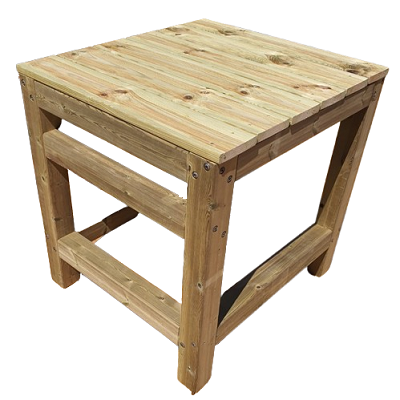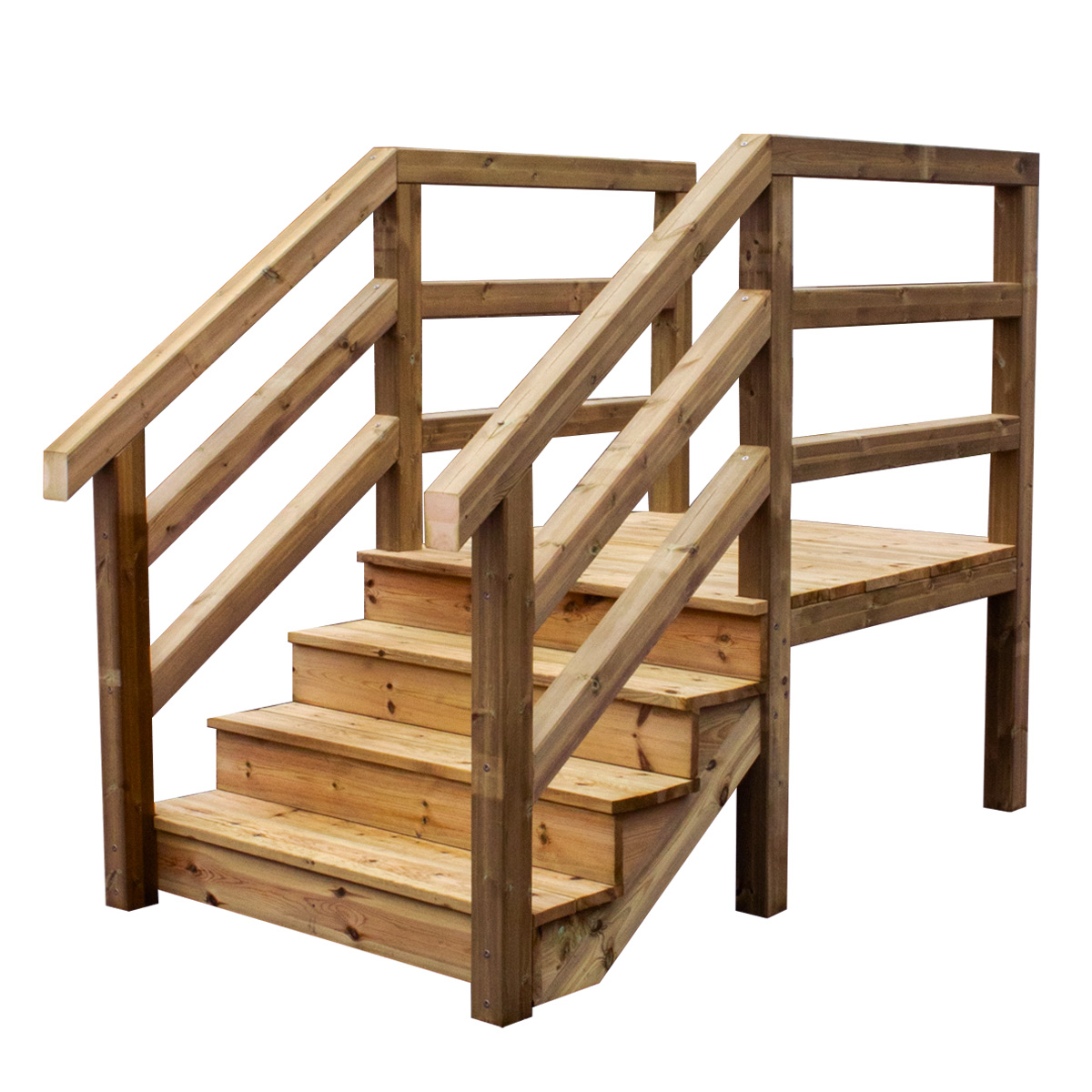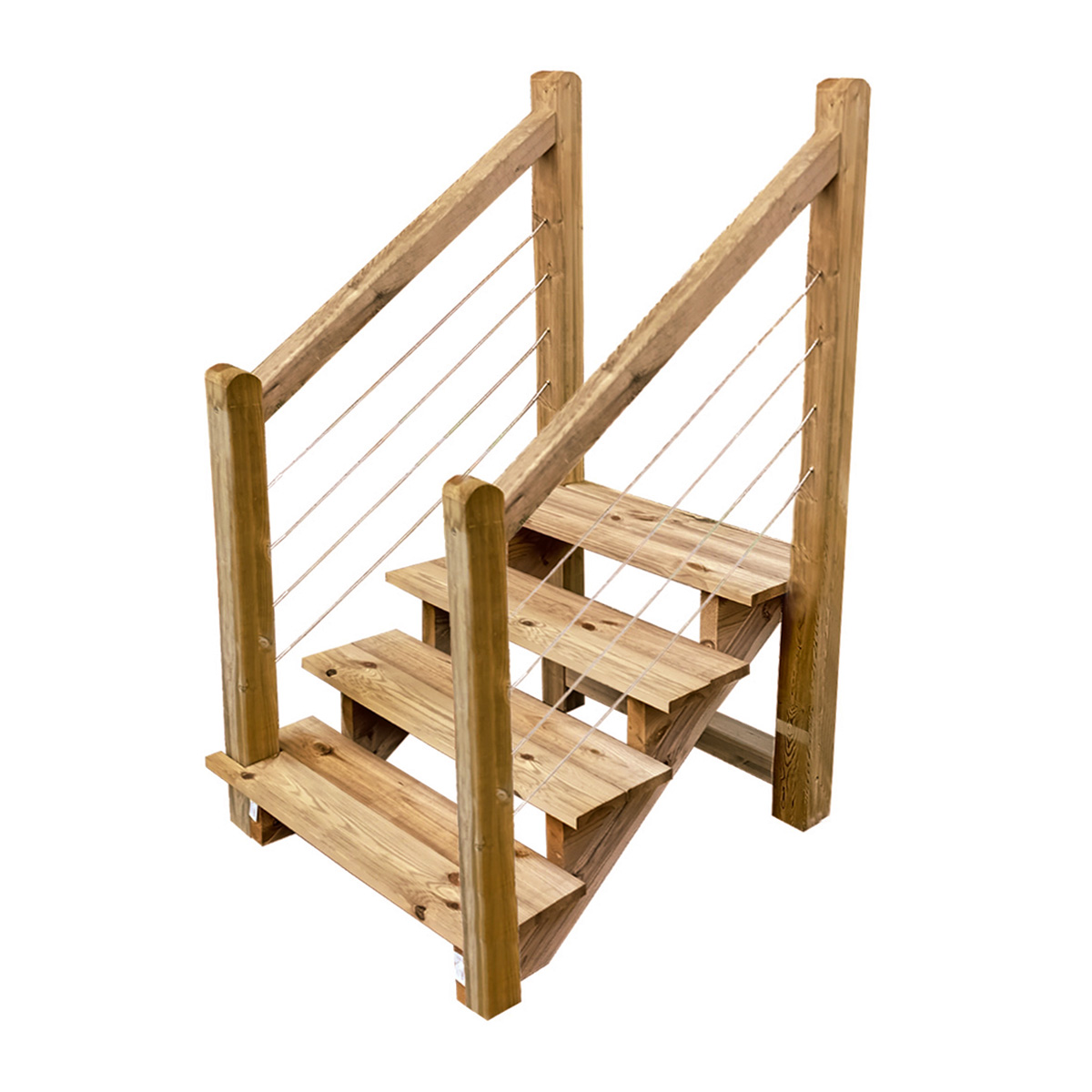Deck stairs
Deck stairs from Vinuovo: with elegance and functionality - ready for immediate assembly!
Beautify your garden or patio/terrace by easily eliminating height differences with our exclusive prefabricated outdoor steps made out of wood or steel. With our do-it-youself kits, installing new wooden outdoor steps is an easy thing!
Our outdoor steps are not only a practical solution to connect your front door with the garden, your entrance, your terrace or balcony with the outdoor area, but they add also a touch of unique beauty and design to your space. You can choose between the warm elegance of wood or the modern power and design of steel/metal to create a space with the outdoor steps what reflects your unique style.
You can now buy wooden deck stairs from VINUOVO and transform your space, your garden with style and functionality. Give your home an unique element with our outdoor steps - the perfect mix of practicality and contemporary design.
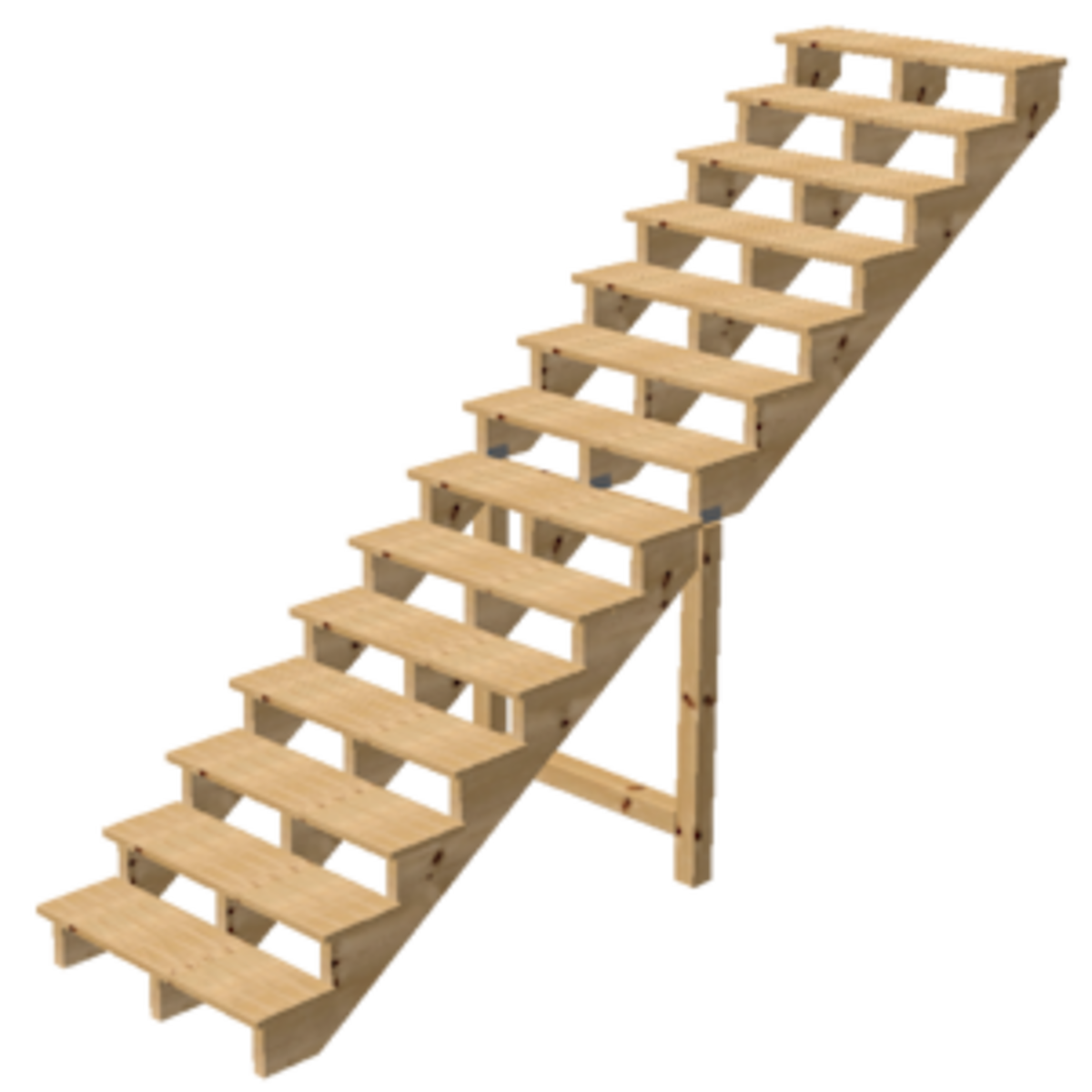

- 2 to 16 steps: 37cm to 275cm
- Length: 60-80-100-120-140-160cm
- Depth of the steps: 29cm
- with or without countersteps
BERLIN - Kit for the wooden outdoor steps - up to 16 steps
The wooden steps are made out of pressure-treated wood with a flat and a ribbed side.
The wooden planks are not pre-drilled, which has the advantage that you can freely choose the position of the screws.
These steps stand approx. 3cm above the stair stringers, which makes the assembly easier. The steps can also be attached to both wooden and metal stair stringers.
This allows you to overcome height differences of 37cm up to 275cm.
The deck stairs with are sold with and without countersteps. The countersteps can be ordered separately.
Steps can also be ordered separately.
XL outdoor staircase wood MADRID with extra large steps
Do you need a lower rather than a higher level for your outdoor steps?
The XL deck stairs are ideal for using in the outdoor area if you need outdoor steps with deeper steps. The depth can vary between 117cm and 195cm in total.
The XL outdoor steps are very practical for the outdoor area, for example if you have a larger distance between the street and the entrance to your home. It is also very useful for people with a limited mobility.
With the advantage of a deeper/larger step (39cm depth compared to 25cm for other steps), this deck stair is ideal for overcoming height differences of 42cm to 68cm.
Another step towards creating your deck stairs: with a kit!
Modular step for outdoor steps with a height of 17cm.
This step can be installed/placed under a deck stair to reach a door or to raise up a deck stair to another height. It is available in various sizes and also individually.
The possibilities of these steps are unlimited. By mixing different widths and lengths, an outdoor deck stair can be built with multiple dimensions.
The planks for the steps are flat on one side and ribbed on the other side. But they are not pre-drilled. So you can choose whether you want to use the flat or the ribbed side.
The widths correspond to the standard width of the VINUOVO outdoor stairs. You can choose between the width of 60-80-100-120-140-160cm.
The depth or length corresponds to width of the wooden planks of 14.5cm. You can choose between 2 or 12 depths or lengths to create the size of the deck stair you need!
If you want to create outdoor steps with the modular steps, you can easily stack the steps on top of each other, as you prefer. If you want a deck stair like on the photo, you will need:
Steps of the same width, BUT with different depths. Example as on the photo:
- 4 modular steps, width 80cm
- with different depths: from the top to the bottom, the depth of the steps is: 2 planks - 4 planks - 6 planks - 8 planks (height 17cm and width 80cm)
The step can even be used as a planter. Simply turn it upside down :-)
OSLO-deck stairs steel with steps out of pinewood
The wooden steps are made out of pressure-treated wood with a flat and a ribbed side.
They are sold without countersteps and the option to combine them.
This allows you to overcome height differences of 37cm up to 139cm.
Steps can also be ordered separately.
BALI - Metal stairs outdoor with Bankirai hardwood steps.
The steps out of hardwood Bangkirai, have a flat and a ribbed side. The wooden steps are not pre-drilled.
The hardwood is visually attractive and it is characterised by its stability and durability. The steps are used with metal stair stringers.
The outdoor steps are suitable to overcome height differences from 37cm to 139cm. They are sold without countersteps and the option to combine them.
The wooden steps can be purchased separately.
Why you should choose these deck stairs from VINUOVO?
Simple assembly: The outdoor steps are sold in kits that contain everything you need: steps, stair stringers and screws out of stainless steel.
Modern and varied design: The mix of galvanised steel/metal and wood creates a modern effect, a modern design. The combination of materials creates an aesthetically attractive solution that suits all styles and requirements.
Stability on detail: Each deck stair is assembled with using stainless screws from the well-known german brand REISSER. The quality of the materials guarantees a stable and safe construction. The galvanised steel/metal stringers are specially manufactured by VINUOVO. This allows us to control the quality, and we are proud of that! The steel stair stringers are easy to maintain and will last for many years.
You want higher outdoor steps? You can then attach the 5-step or 6-step landing to the metal outdoor steps for having an additional step.
Possibility of attaching a platform and a handrail
You can add an elegant and solid platform or handrail to your outdoor steps. Whether you are looking for a touch of style or simply an additional safety element. Your path can be individualised with these products.
You can find more information on this page: Deck stairs with landing or on our blog post page: How to build deck stairs with landing?
If you want more information: Outdoor stair banister
Fastening material:
Prefabricated outdoor steps: high quality, fast installation and environmental compatibility
Frequently asked questions / FAQ:
How do you choose your outdoor steps?
Outdoor steps in the outdoor area connects the different levels inside and outside the house.
First measure the exact height difference you want to overcome.
Read the information on the different types of outdoor steps carefully and choose the right height/number of outdoor steps that suits best for your height difference.
You can also choose whether you want a wooden or metal stair stringer (you always need at least 2 stair stringers for our deck stairs).
Choose the type of step (wood type A, wood type C, wood type D).
At the end you enter the width which you need/wish.
You can easily use our configurator for the deck stairs, who supports you in the process to make the best purchasing decision.
Which steps you should choose for the deck stairs?
The outdoor steps are supplied with pressure-treated wood or exotic Bangkirai wood. The exotic Bangkirai wood is easy to maintain, resistant and more stable than autoclave/pressure-treated impregnated wood.
The size of the steps can vary between 120/145mm in the depth. Outdoor steps have two planks per step in "normal size" and 3 planks per step for our XL outdoor steps.
The thickness of the wooden planks varies between 28mm and 42mm and the width between 60cm and 160cm.
How many stair stringers are necessary for building deck stairs?
The steps are fixed at the outdoor steps. We recommend installing a stair stringer every 60cm. If the distance is greater, the step could break, because it can not support the full weight.
However, it is possible that the outdoor steps protrude approx. 10cm beyond the stringers, depending on the width of the steps and the number of the selected stair stringers.
For example, have you choosen deck stairs which are 80/100cm wide? Then you can install stair stringers in a distance of 50cm and let the step protrude 10cm or 20cm on each side. But when we go up or down the deck stairs, we generally walk in the middle of the step. So we have more resistance there.
We recommend: for steps with a width of 60cm up to 100cm: 2 stair stringers / for a width of 120cm up to 160cm: 3 stair stringers.
A stair stringer must be added every additional 60cm.
How are the outdoor steps fixed at the stair stringers?
The outdoor steps are supplied with pre-drilled holes (wood type A), so that you can fix the steps with the supplied stainless steel screws at the stair stringer.
The outdoor steps type C (pressure-treated wood, one side flat and the other side ribbed) and the type D (exotic wood, one side flat and the other side ribbed) are not pre-drilled. You can position the screws as you wish.
The number of the supplied screws depends on the width and the height of the deck stairs. It depends as well from the number of the steps, you have to attach.
What if the deck stairs Vinuovo suggest are not suitable for my needs?
You can find on our website no outdoor steps, which meet you requirements?
In this case we propose you 4 possibilities:
- Choose the outdoor steps that are lower than the height you actually need. The remaining height corresponds to an additional step to your desired height.
- For wooden deck stairs, you can order a higher deck stair in a kit and you can shorten the stair stringers a little bit to reach the desired height. (Don't forget to take the height of the step into consideration.) This is because the first step will then be less high than all the others, which will not be a problem in using the outdoor steps.
- If your floor is a little bit sandy, you can dig the stair stringers on the side into the ground so that your stairs are lower (ATTENTION: Place a hardwood or pressure-treated wood plank under the supports/stair stringers so that the deck stairs do not sink into the ground with the use.)
- We are working on a solution that allows to place a mini platform under your deck stairs so that the whole thing fits exactly to the height of the deck stairs. At the moment we produce different prototypes. Please contact our customer service for more information.









